SIZING UP
On board the first 28m Mazu 92 DS model, Water Lily
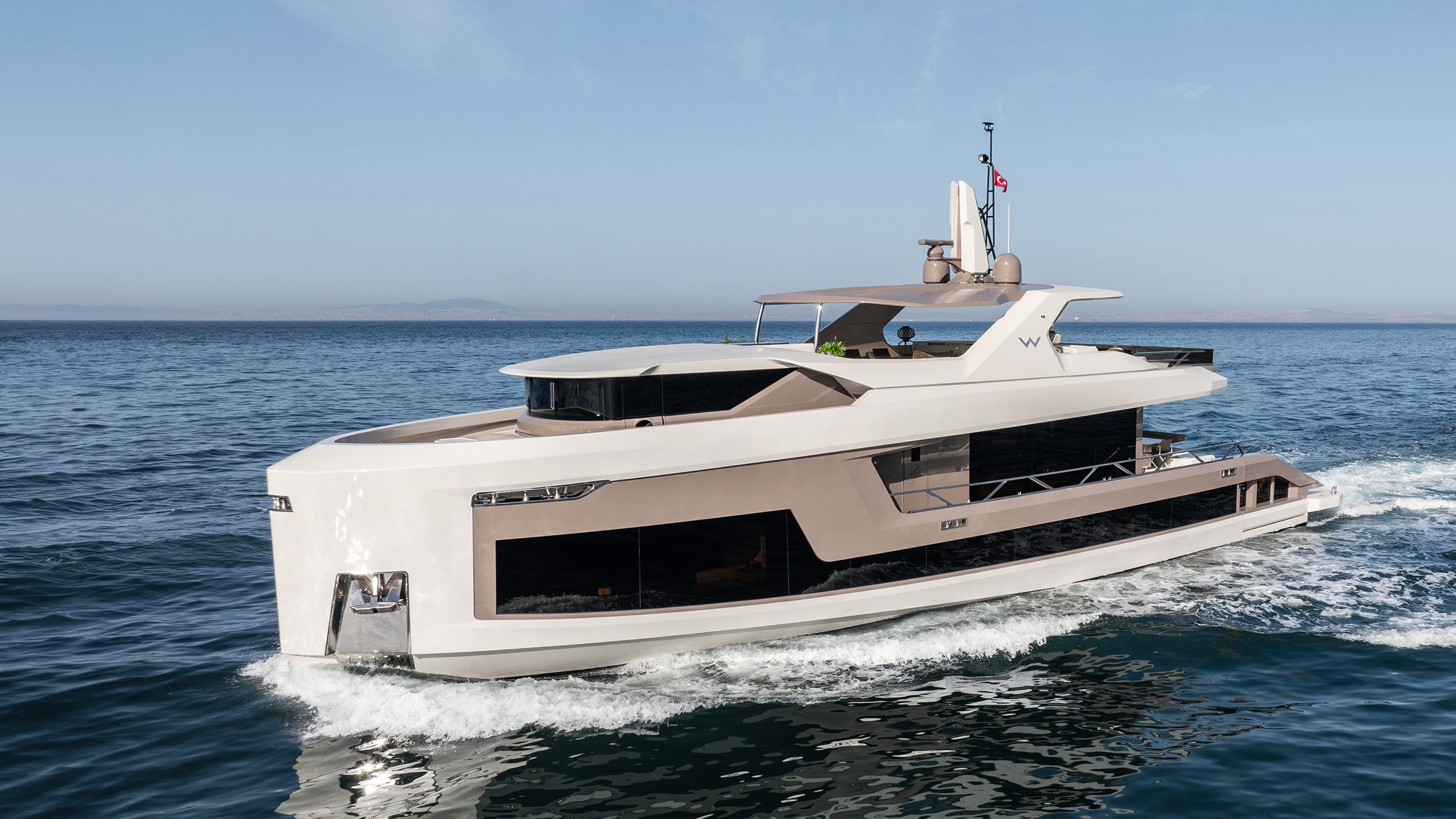
The Mazu 92 DS is a departure for both its builder and the industry. Kevin Koenig discovers an unorthodox approach to space and propulsion...
POZITIF STUDIO
Turkey’s Mazu Yachts has made something of a name for itself since it was founded by owner Halit Yukay in 2011.
The yard, which is situated on the Sea of Marmara about an hour and a half south of Istanbul, not accounting for traffic (which you definitely need to do), has heretofore turned out fibreglass superyacht tenders with modern, edgy lines that look at home buzzing about off the transoms of the more avant-garde superyachts being built in Turkey and Italy.
In 2020 the 24.5-metre Mazu 82 dayboat entered the scene, still in composite. But at the 2023 Monaco Yacht Show, Mazu showed up with something completely different.
The 28.5-metre 92 DS is a superyacht in its own right, and it’s the first steelhulled yacht powered with pod propulsion – triple 800-horsepower Volvo Penta IPS1050s. It’s the first in a series that will include a 112, a 132… and then, who knows?
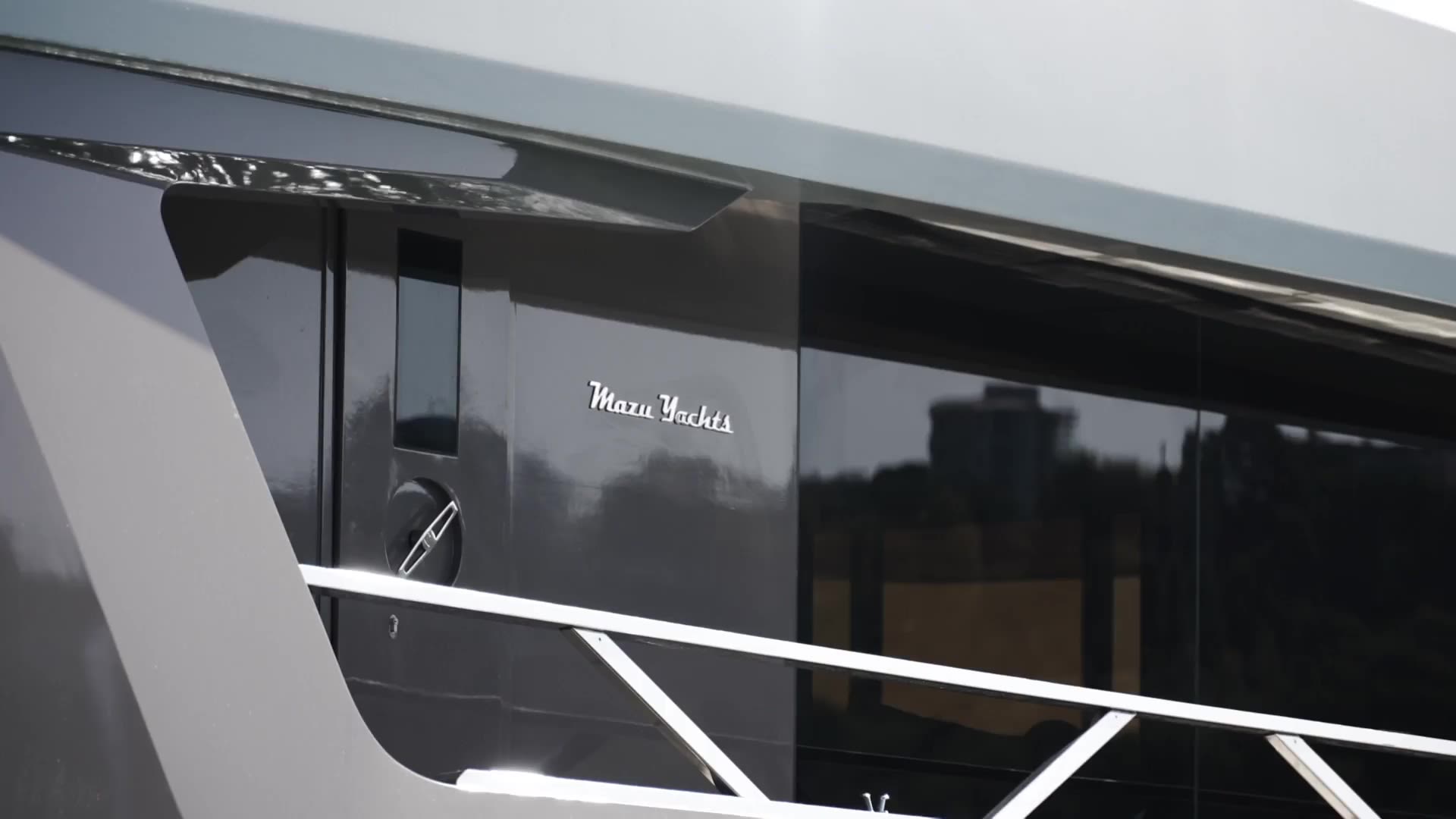
For Yukay, the 92 DS and its larger sisters to come were a natural progression for his company, from a trends perspective as well as basic economics. “We want to grow the company, always,” he says.
“We are known for chase boats, but we started to have a more demand for larger boats. We looked at the market and saw an overall aim towards semi-displacement explorer-type boats.
“After Covid-19 we invested in a new facility and now we have space to build those bigger boats that the market has an appetite for. And of course, we like the bigger boats because the profits get bigger too, as you might imagine.”
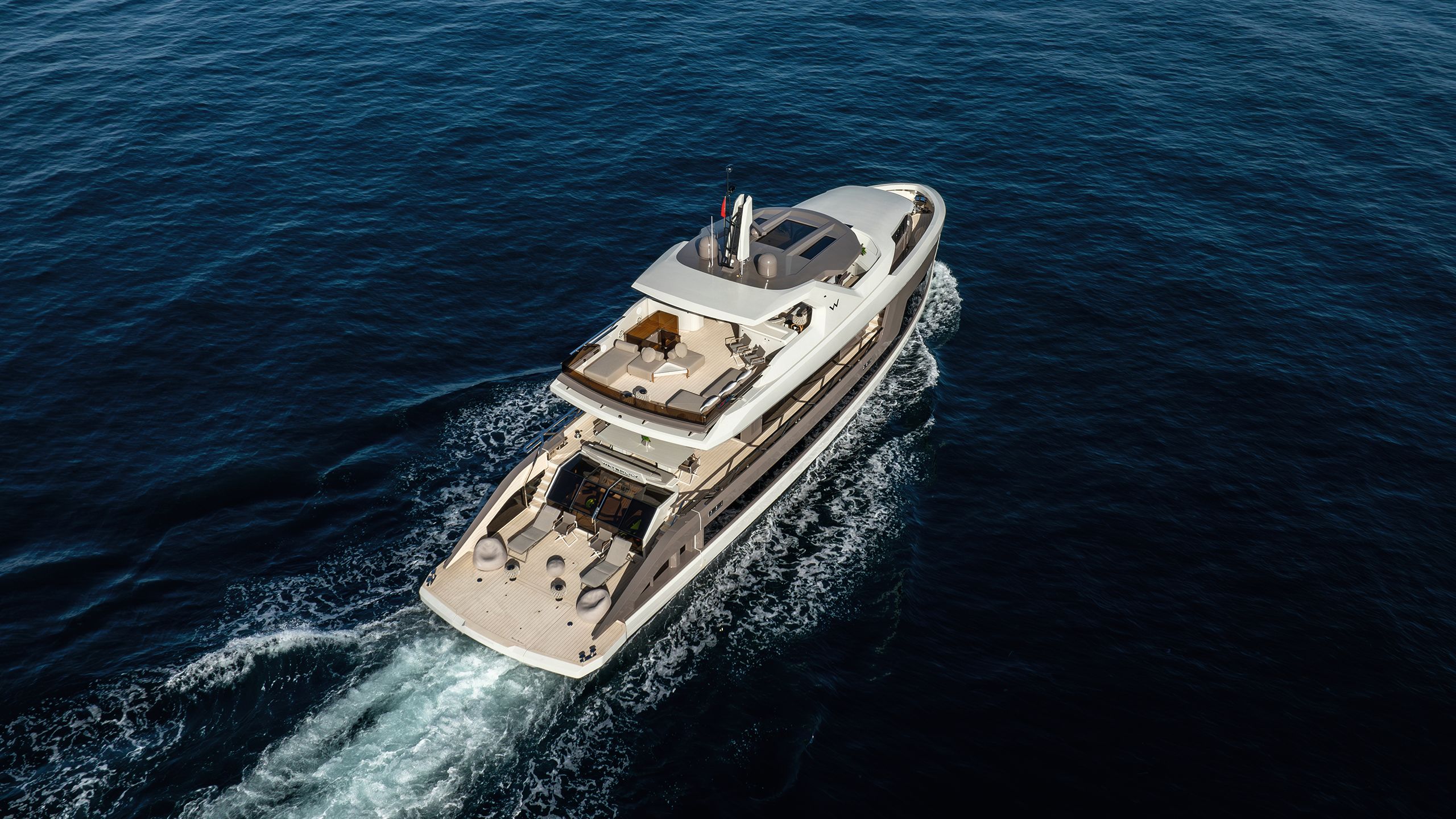
POZITIF STUDIO
POZITIF STUDIO
Yukay chose to go with the unusual propulsion system for a few reasons, not the least of which was efficiency. With the rising costs of fuel, especially in Europe, as well as further focus on reducing carbon footprint, the Volvos became a tempting option.
Yukay also says that with this size and type of yacht, comfort played a larger role in engine choice than on his zippy tenders. Thus the minimised vibration that the Swedish engines offer made them appealing. And lastly, the compact IPS motors allowed Mazu to maximise space. And they did that in an interesting way.
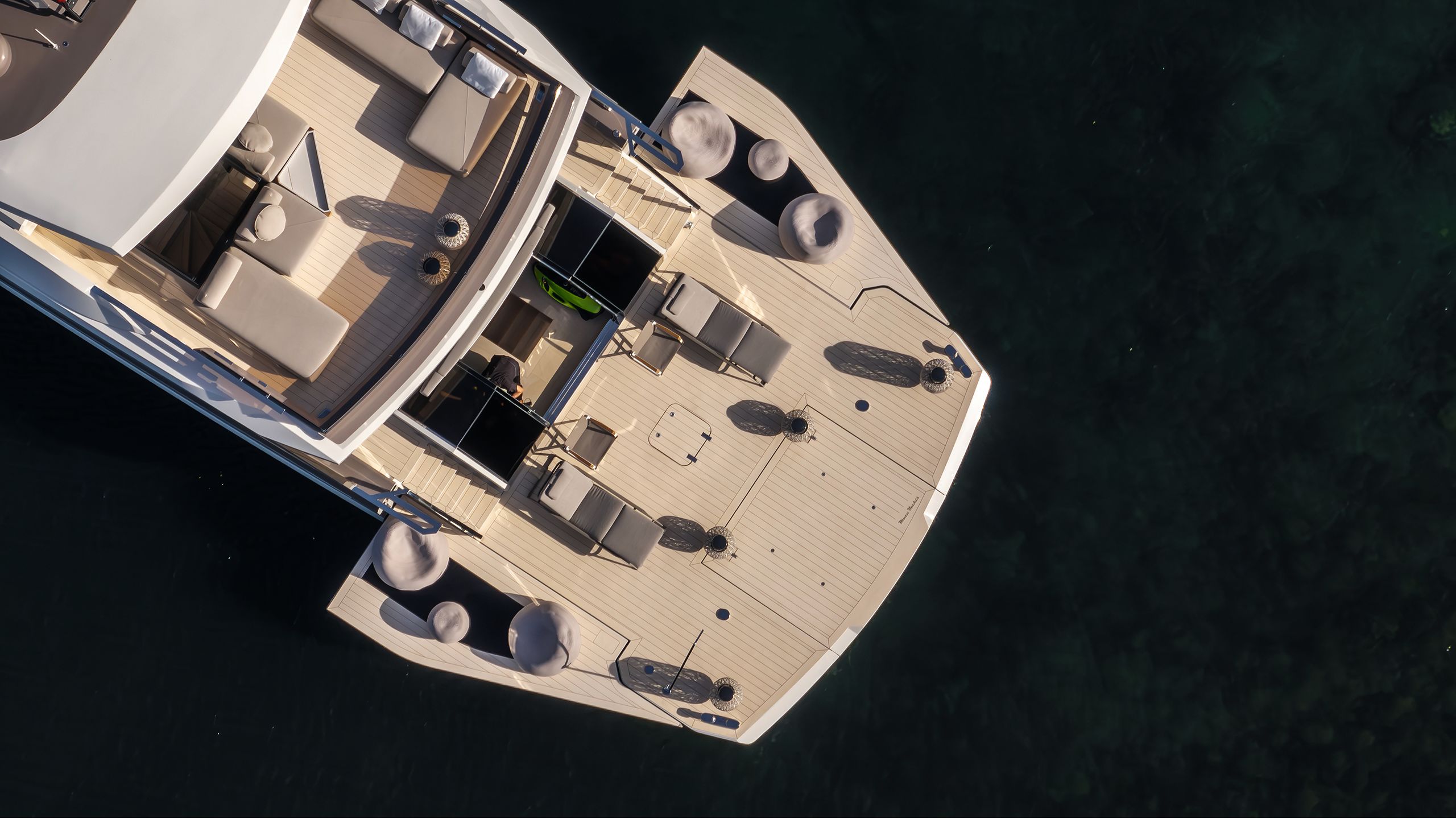
POZITIF STUDIO
POZITIF STUDIO
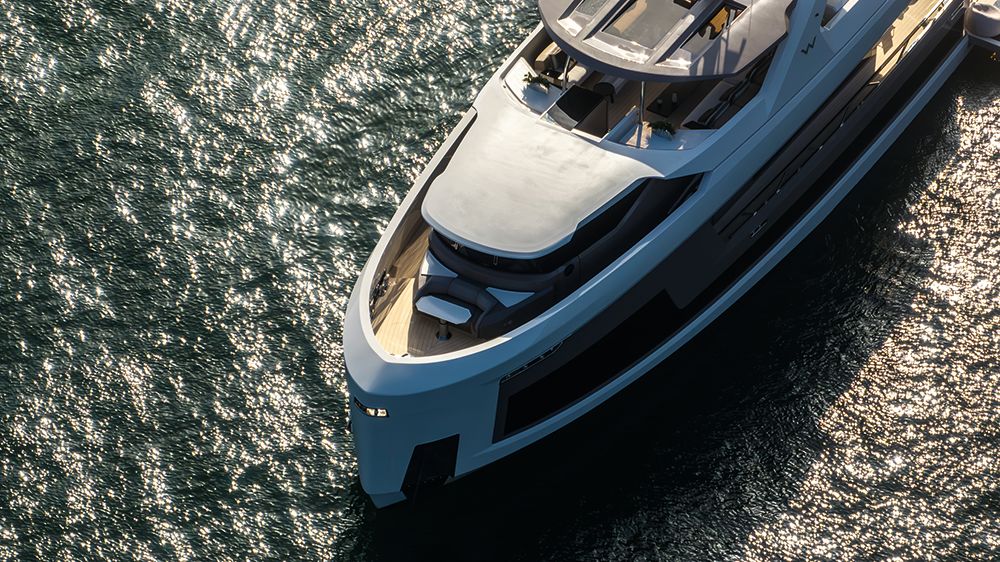
POZITIF STUDIO
POZITIF STUDIO
A beach club with fold-out terraces adjoins a second, lower saloon to create a fun, private area separate from the rest of the yacht (left)
“We divided the engine room into two,” says Fatih Sürekli of Istanbul’s Red Yacht Design, which did the 92’s interiors and exterior.
“We put the three IPS engines under the beach club, and then the pumps, boilers, batteries and everything else have their own space in the bow just in front of the crew area and below the master cabin. We decided to do that because we didn’t want anything to impede the lounge and the guest cabins.”
The biggest issue that Mazu faced with building a steel-hulled IPS boat was proving to Volvo Penta that they could actually do it
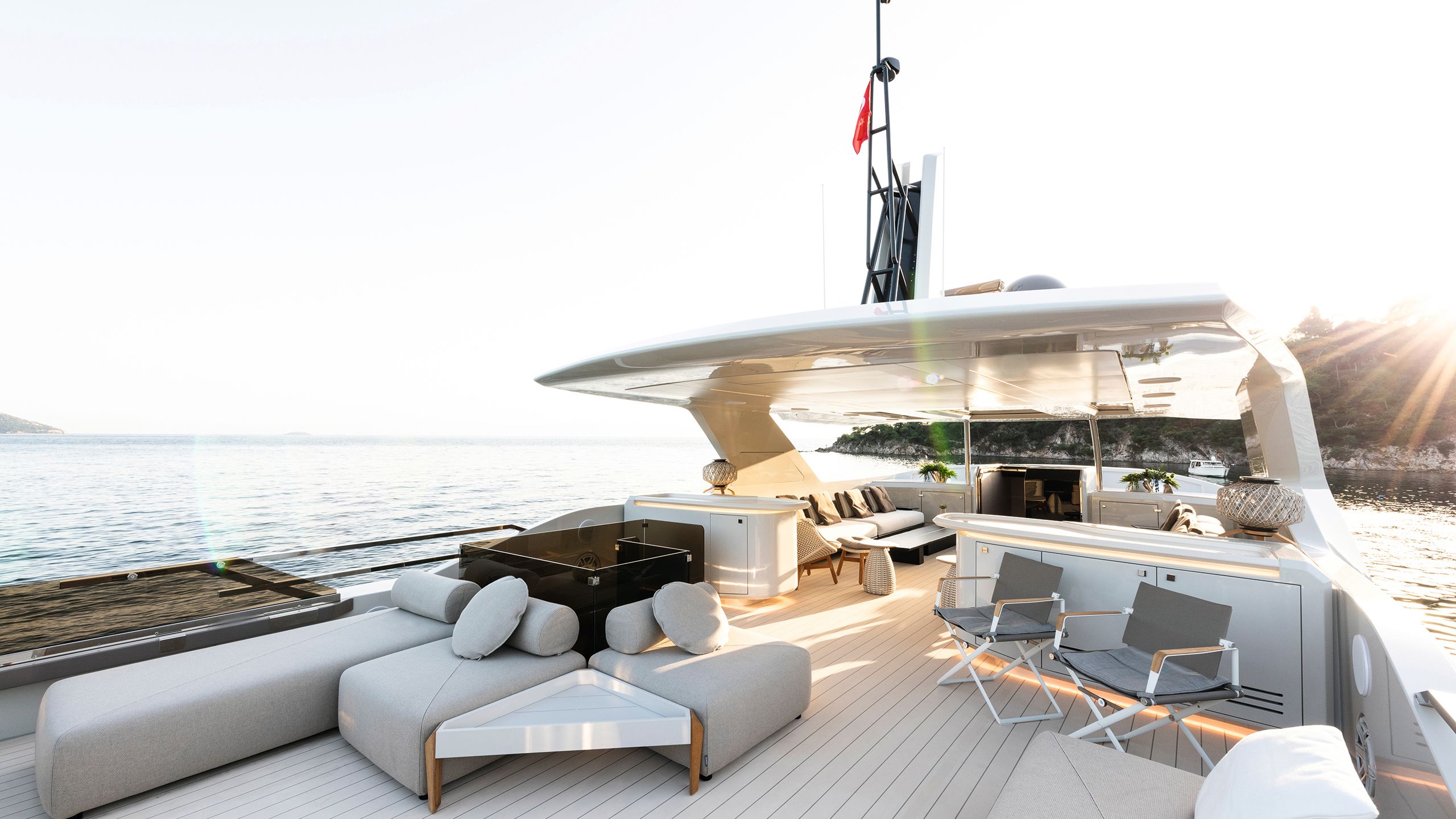
Both of these work areas on the boat are well laid out and orderly, making service to the engines and the accompanying systems easy to manage for a crew that should number between four and five, depending on owner needs. The biggest issue that Mazu faced with building a steel-hulled IPS boat was proving to Volvo Penta that they could actually do it.
“We had to engineer the inserts for the pods to be installed,” says Yukay. “We subcontracted the hull, and we built the IPS part from a mould. We created the cast-iron inserts and welded it into the hull so the whole thing could work.”
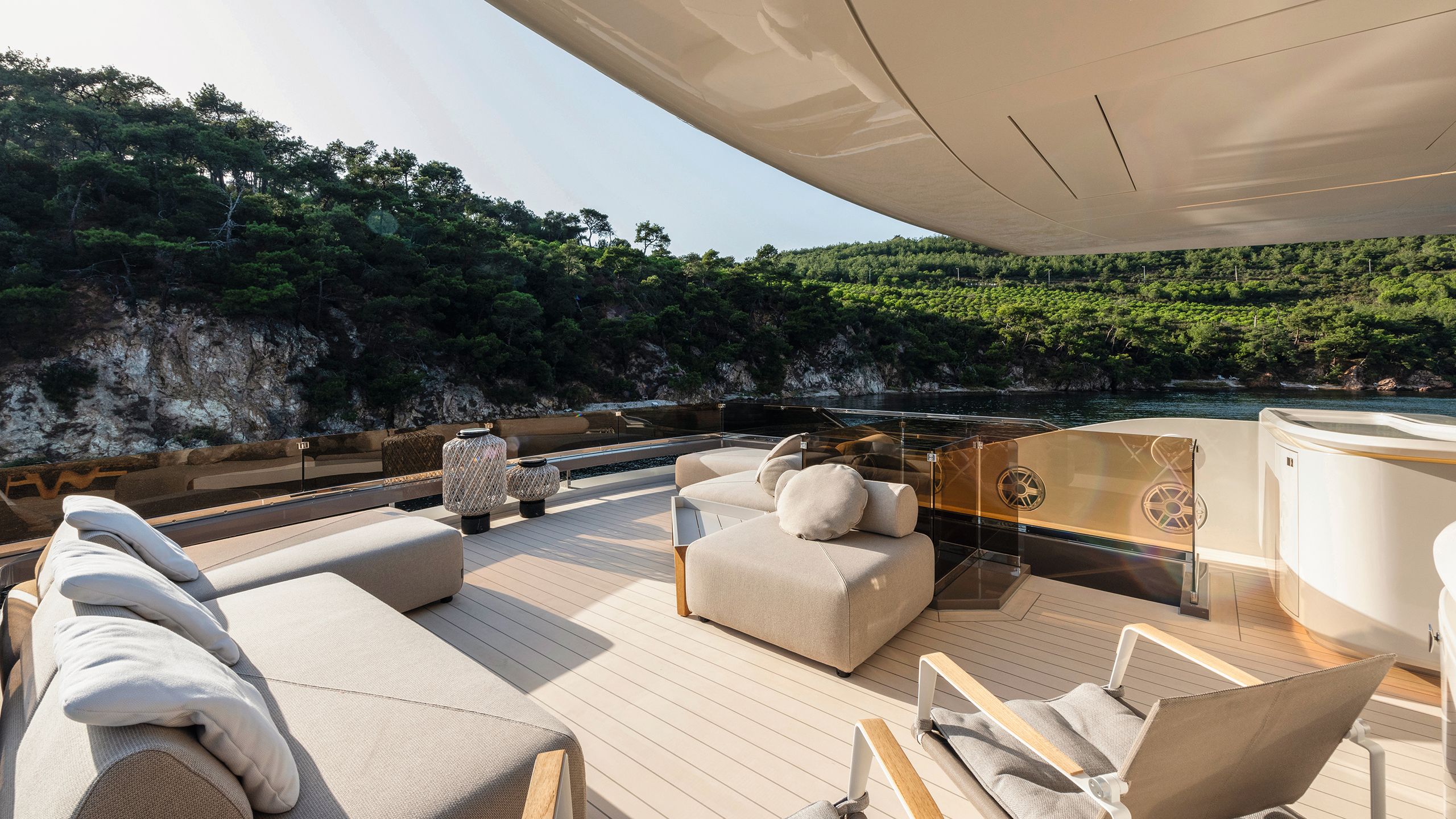
POZITIF STUDIO
POZITIF STUDIO
The yacht shown in Monaco has a beachy, Eastern Mediterranean vibe to its deco
It worked: the Mazu 92 DS combines a strong hull with quiet, efficient, small engines. Red Yacht Design was excited about having this room to play with, and it made the most of it.
The sense of space aboard the 92 DS is evident from the moment I hit the swim platform, as the boat bobs stern-to at the dock. It is a laudable feat considering how tightly packed in among her peers she is on Monaco’s Quai des Etats-Unis.
The flybridge swoops back to cover the entire aft deck, making it exceptionally spacious
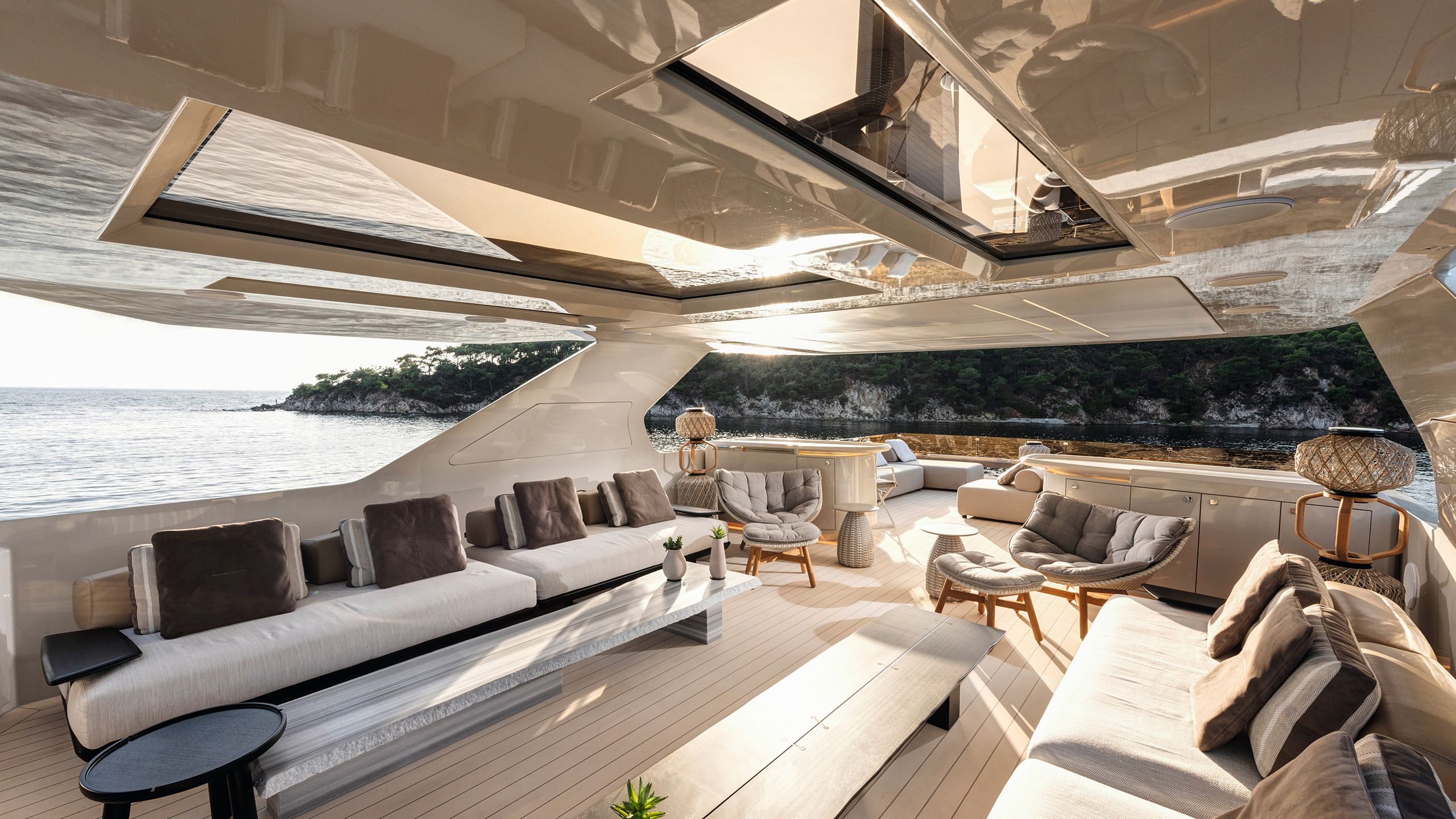
This yacht is right on trend, with a massive swim platform/beach club area that feels like it should be on a 30-metre-plus, especially with fold-down terraces open to either side.
The space is large enough to hold plenty of modular seating in the form of sunloungers and ottomans (in this case) and also a transformer capable of lifting two tonnes, for launching a tender that can range up to just shy of seven metres.
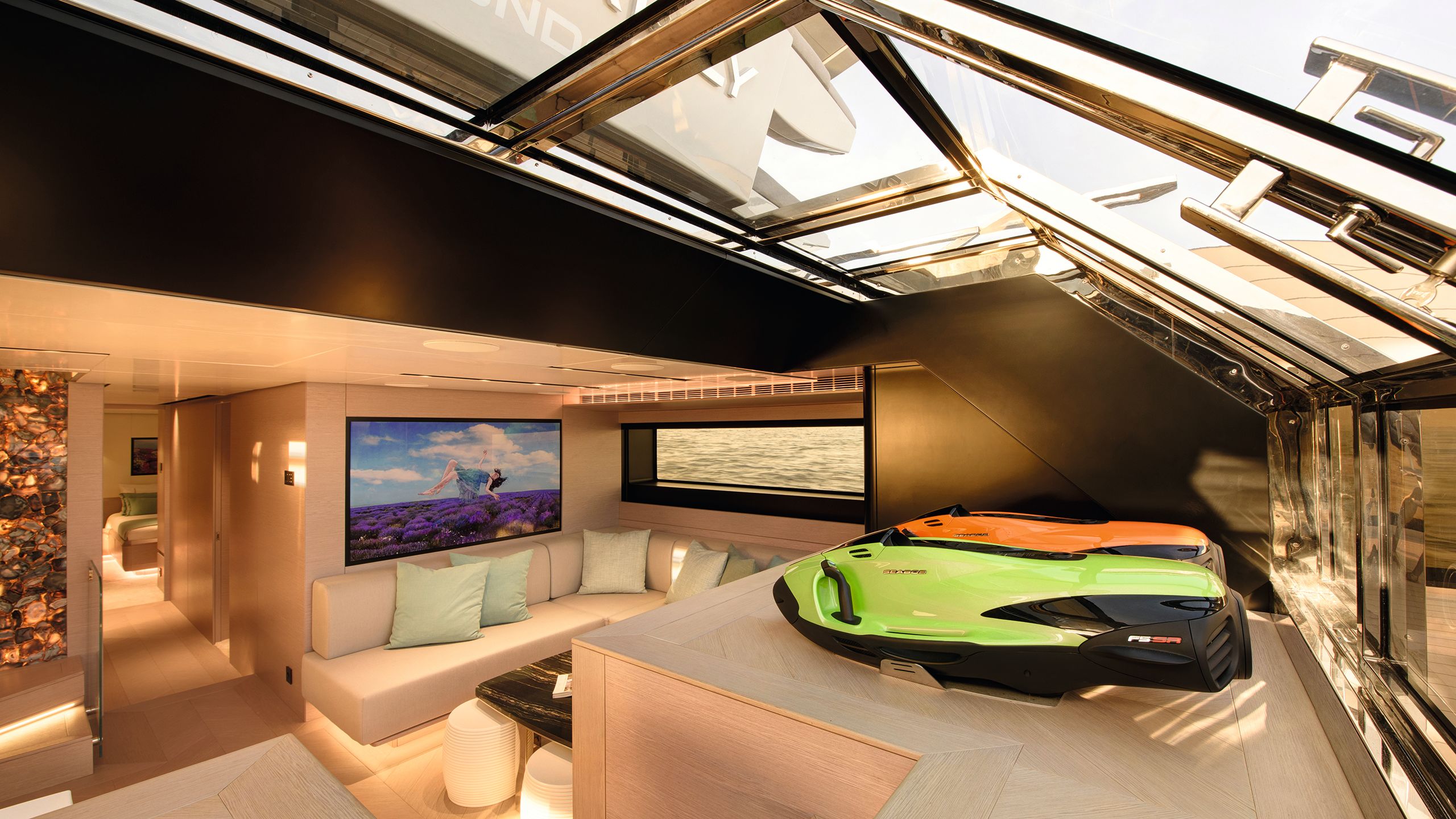
POZITIF STUDIO
POZITIF STUDIO
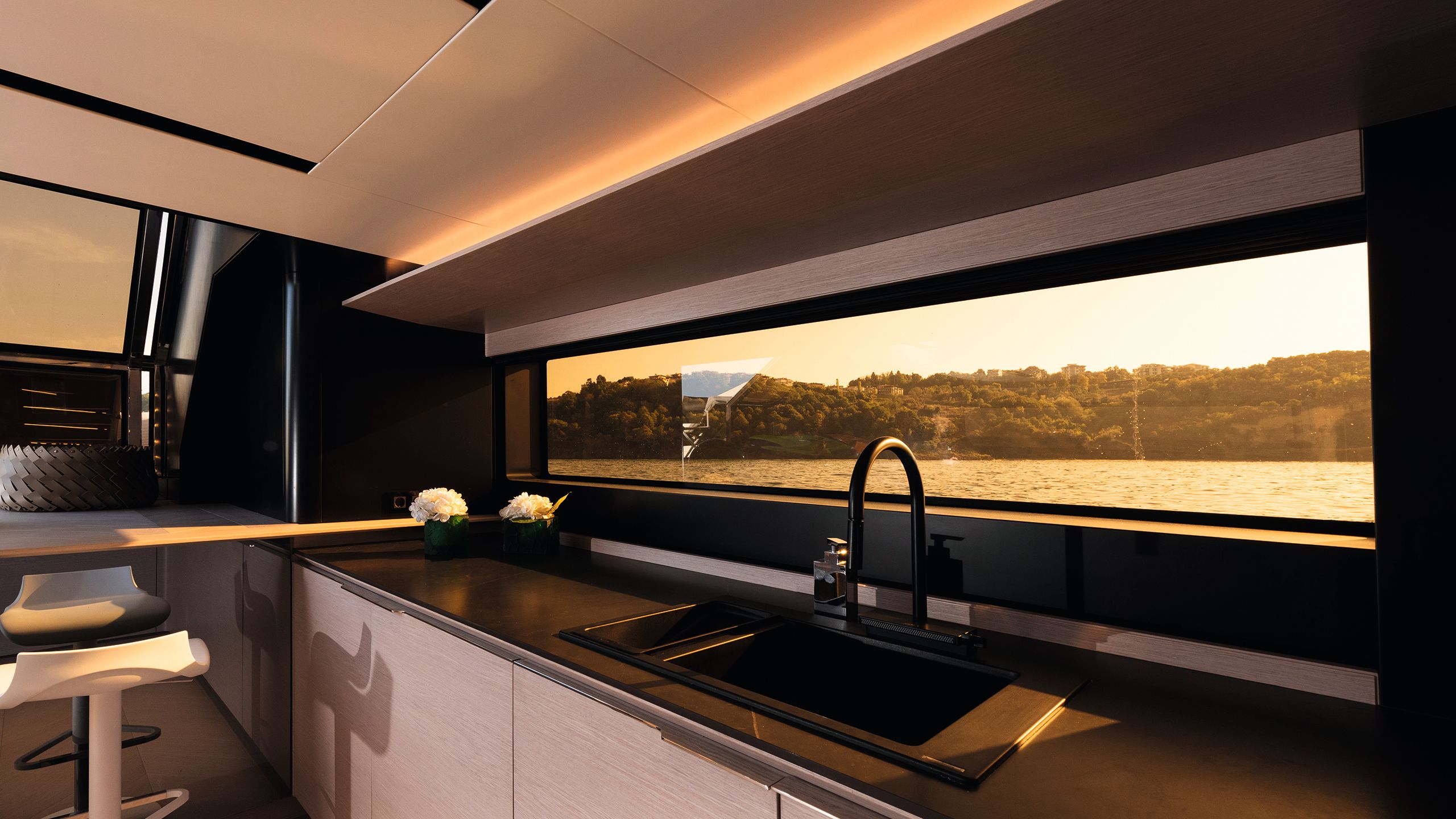
POZITIF STUDIO
POZITIF STUDIO
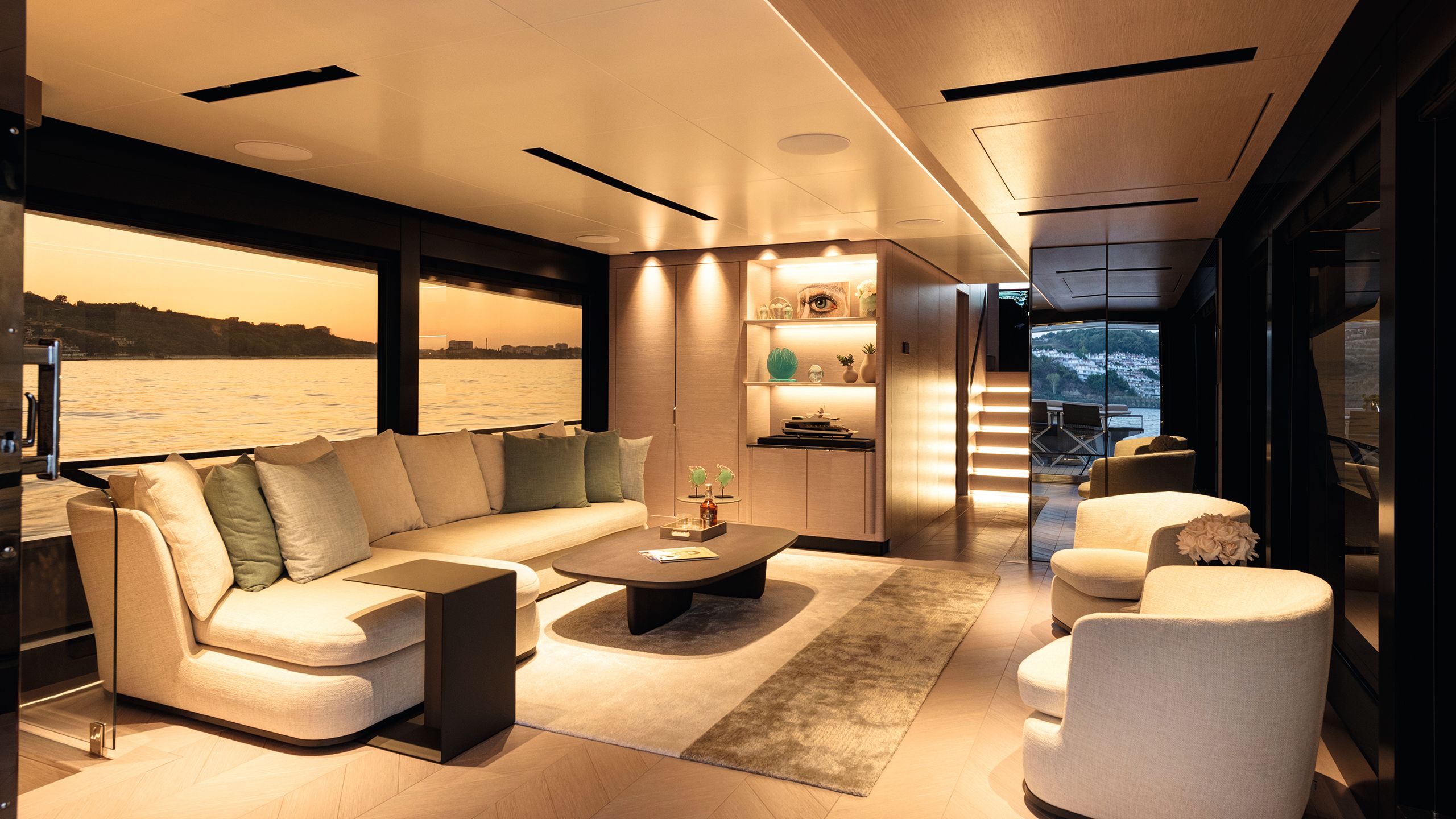
POZITIF STUDIO
POZITIF STUDIO
This model has an upper and lower saloon on the main and lower decks, respectively. A gold quartzite accent piece ties the spaces together thematically
The beach club is made all the more impressive thanks to a brave design choice by Mazu and Red Yacht Design. The yacht has a split-level saloon, which is rare but not unprecedented.
There’s the usual one on the main deck (more on that in a bit) and then a lower saloon that is accessible directly from the exterior portion of the beach club through doors that split to port and starboard.

POZITIF STUDIO
POZITIF STUDIO
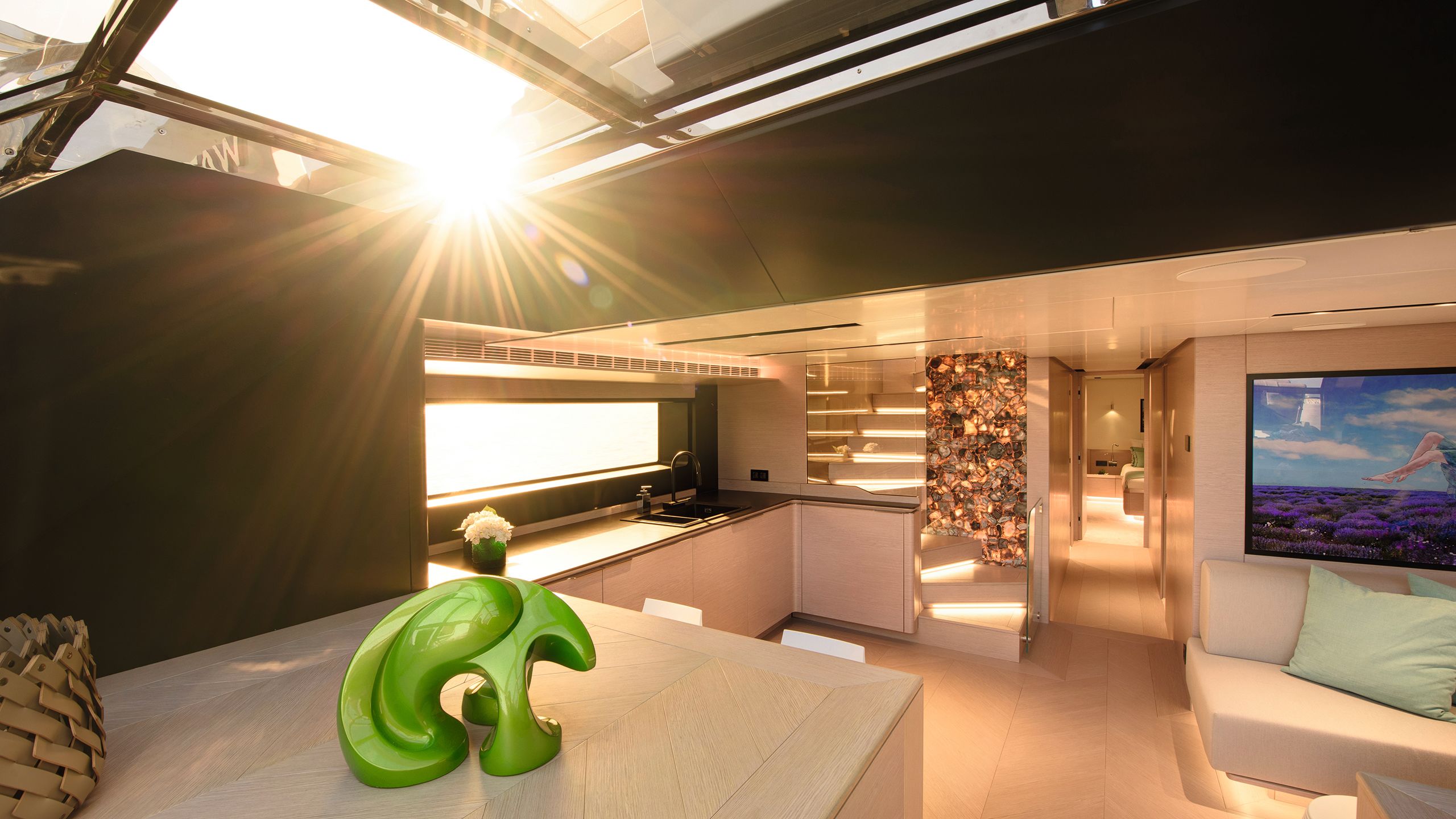
POZITIF STUDIO
POZITIF STUDIO
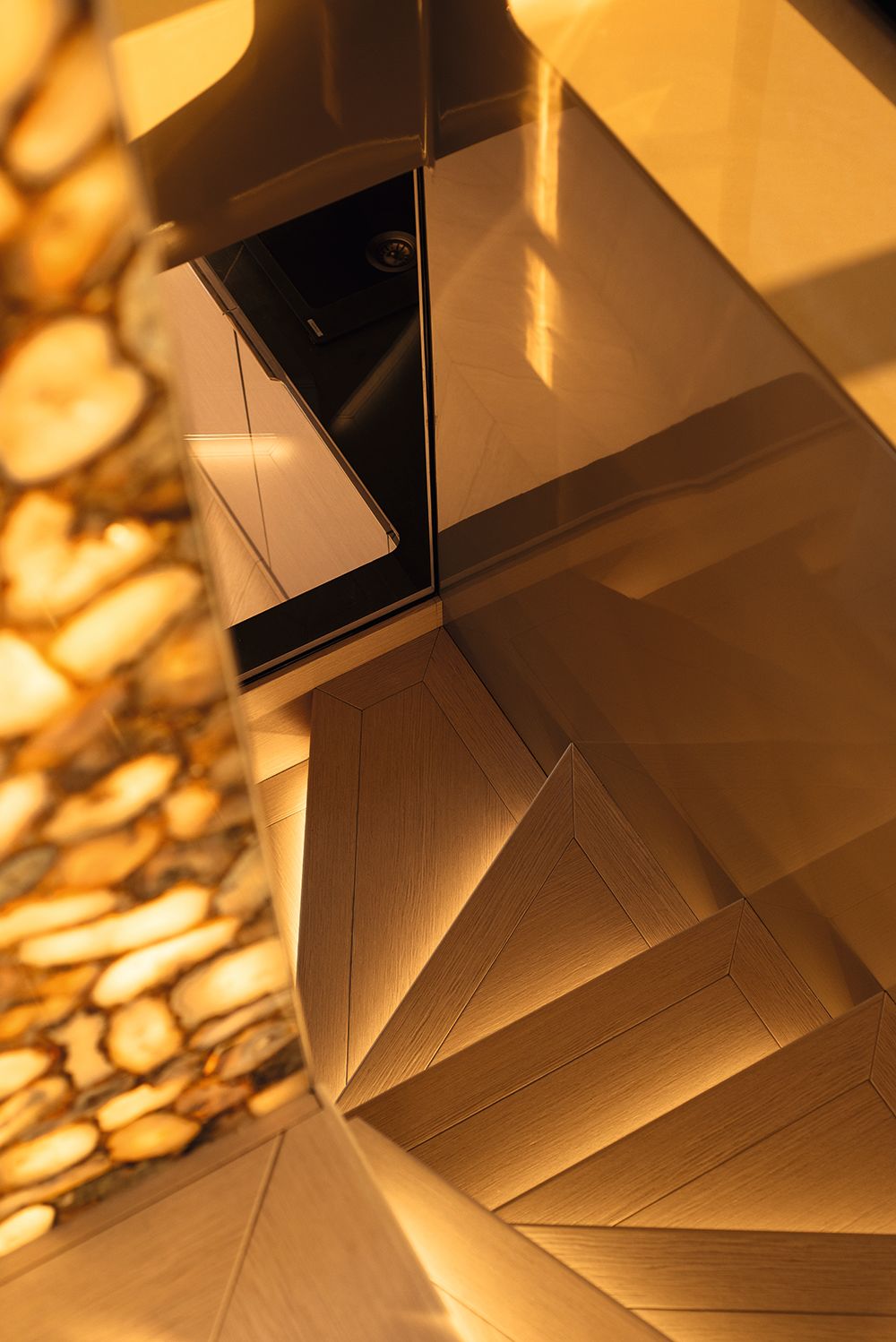
POZITIF STUDIO
POZITIF STUDIO
With the doors open, the lower saloon effectively offers a second interior space to the already large beach club. “We like to think of that space as not only a beach club, but also a space dedicated to the guests, as it connects directly to the guest staterooms on the accommodations level,” says Yukay.
The beach club is made all the more impressive thanks to a brave design choice: a split-level saloon
“The owners can be up top in the main saloon and the master cabin area with lots of privacy, but the guests have that same level of privacy down below. It’s also something that we suspect will be a good option for the charter market and for owners with lots of kids and multiple generations on board.”
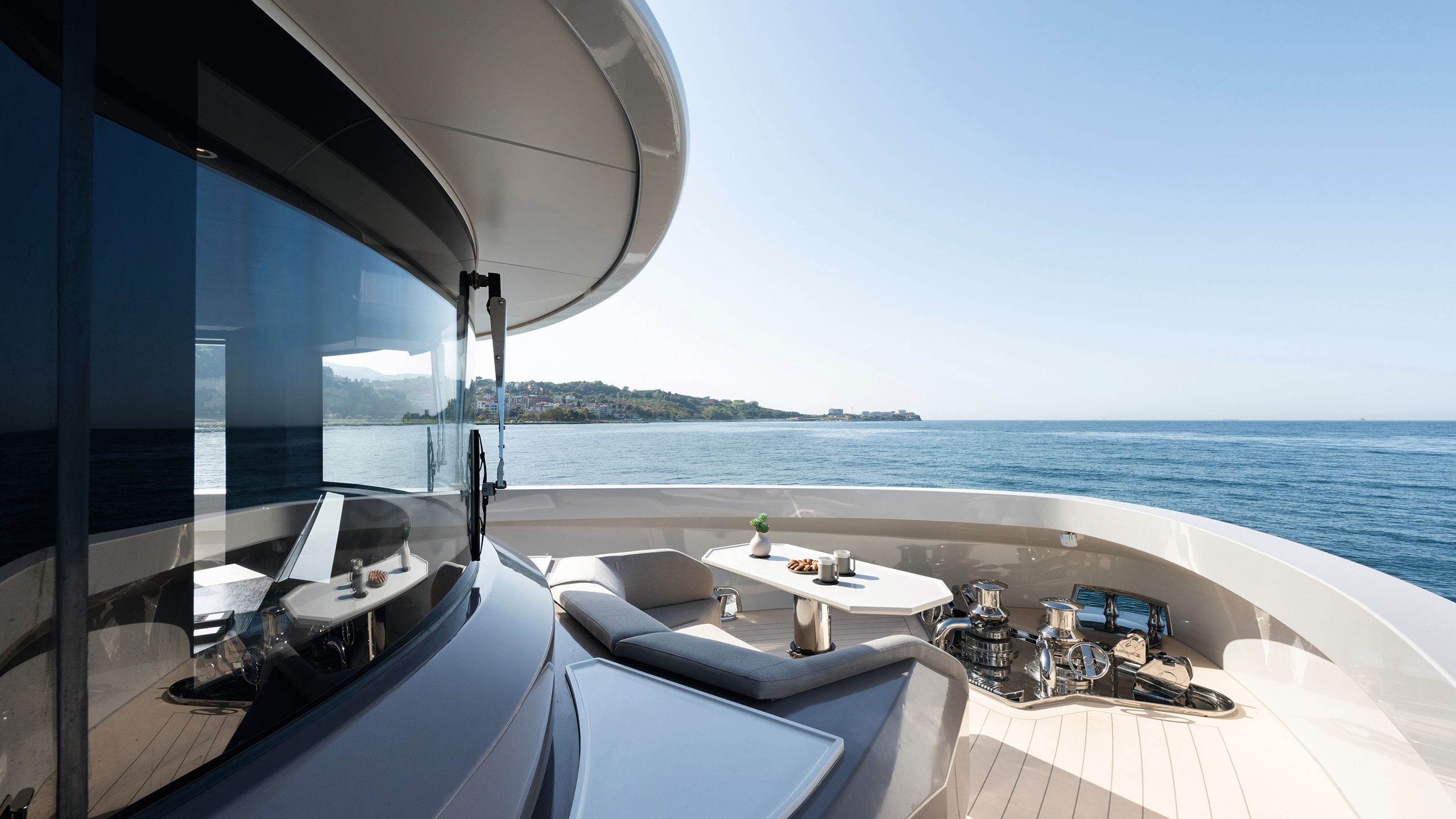
POZITIF STUDIOThe 92 complements workboat-inspired lines with thoughtful work spaces for the crew, such as this roomy bow deck
POZITIF STUDIOThe 92 complements workboat-inspired lines with thoughtful work spaces for the crew, such as this roomy bow deck
The lower saloon on the yacht in Monaco had a full-service wet bar with lots of counter space to port and an L-shaped sofa to starboard, adjacent to a flatscreen television.
A passageway leading forward to the accommodation level and its two guest cabins and full-beam VIP had one of Mazu’s latest trademarks: hidden door handles to all the cabins.
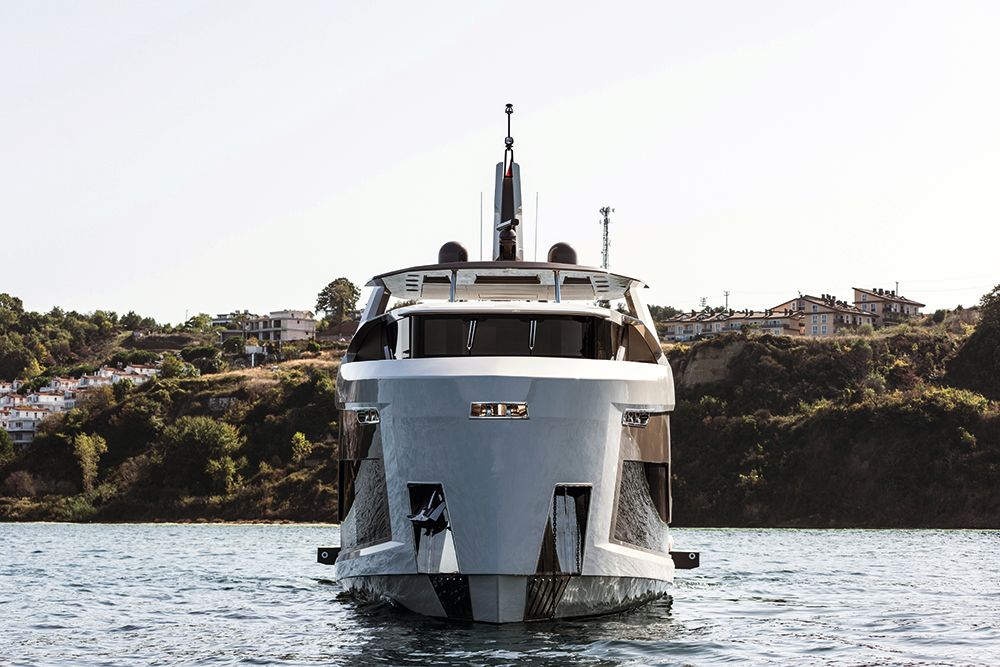
POZITIF STUDIO
POZITIF STUDIO
Instead of a handle, the doors open by pressing them gently inward, at which point they pop open. “The corridors with no door handles are something that helps define this interior,” says Red Yacht Design’s Cana Gökhan, who handled interiors for this project.
“The doors may appear hidden at first, but if you see a spotlight you know to push the surface. It was a joint idea. We were brainstorming what is new and what could be done. And we had this idea, which was actually many years old, but with this owner, we finally had someone who accepted it.”
A PLATFORM FOR DESIGN
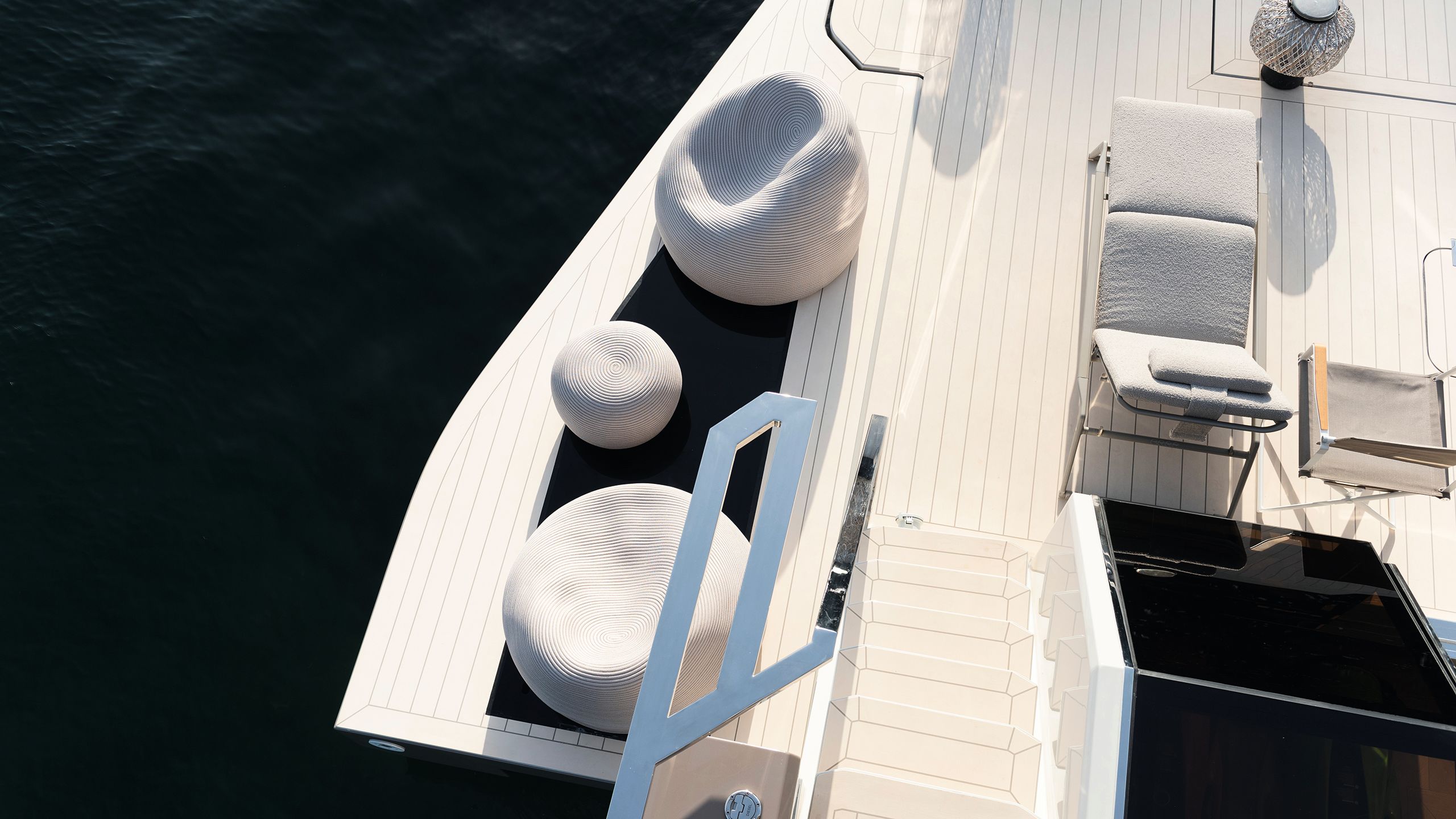
The Mazu 92 DS is one of a bunch of yachts in the 25m to 35m size range with a particular aesthetic. Some of these models include the Wally WHY150, Arcadia A96, Princess X95 and the Horizon FD series.
It’s a look that took hold a few years ago, despite the hand-wringing of many critics who felt the designs were a tad refrigerator-ish. But they were missing the point.
Michael Peters of Michael Peters Yacht Design, who has designed many motor yachts of a similar size, explains: “The idea that a lot of European designers have is that the boat is a travelling beach. The fold-out terraces and such increase the platform, and it’s really a home on the water.
“These builders put a platform down and they want the biggest, squarest thing on it, and they’re really just calling a spade a spade – ‘This is what we are. We want to build the biggest damn penthouse that we can’. For a long time boats were styled like cars, but now they are fully vertical everywhere, and it’s not a trend I see slowing down.”
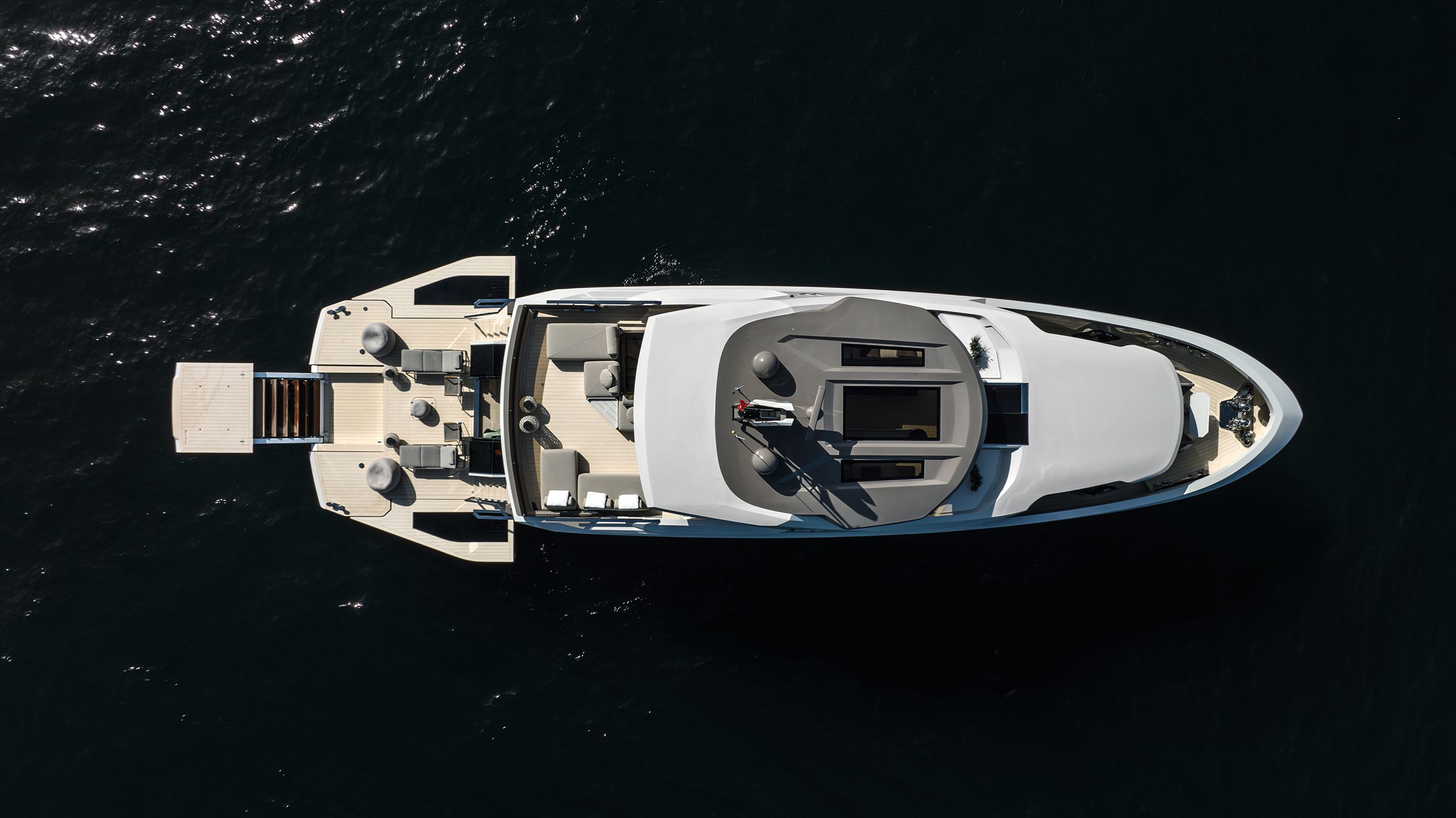
POZITIF STUDIO
POZITIF STUDIO
The Mazu 92 DS is one of a bunch of yachts in the 25m to 35m size range with a particular aesthetic. Some of these models include the Wally WHY150, Arcadia A96, Princess X95 and the Horizon FD series.
It’s a look that took hold a few years ago, despite the hand-wringing of many critics who felt the designs were a tad refrigerator-ish. But they were missing the point.

POZITIF STUDIO
POZITIF STUDIO
Michael Peters of Michael Peters Yacht Design, who has designed many motor yachts of a similar size, explains: “The idea that a lot of European designers have is that the boat is a travelling beach. The fold-out terraces and such increase the platform, and it’s really a home on the water.
“These builders put a platform down and they want the biggest, squarest thing on it, and they’re really just calling a spade a spade – ‘This is what we are. We want to build the biggest damn penthouse that we can’. For a long time boats were styled like cars, but now they are fully vertical everywhere, and it’s not a trend I see slowing down.”
The owner, of course, played a pivotal role in many aspects of this yacht. Its name, for example, Water Lily, is the English translation of his Turkish wife’s name. The owner works in the gold business, so Red Yacht Design picked out gold quartzite and lined a bulkhead with it that runs through three decks – the lower saloon, upper saloon and flybridge.
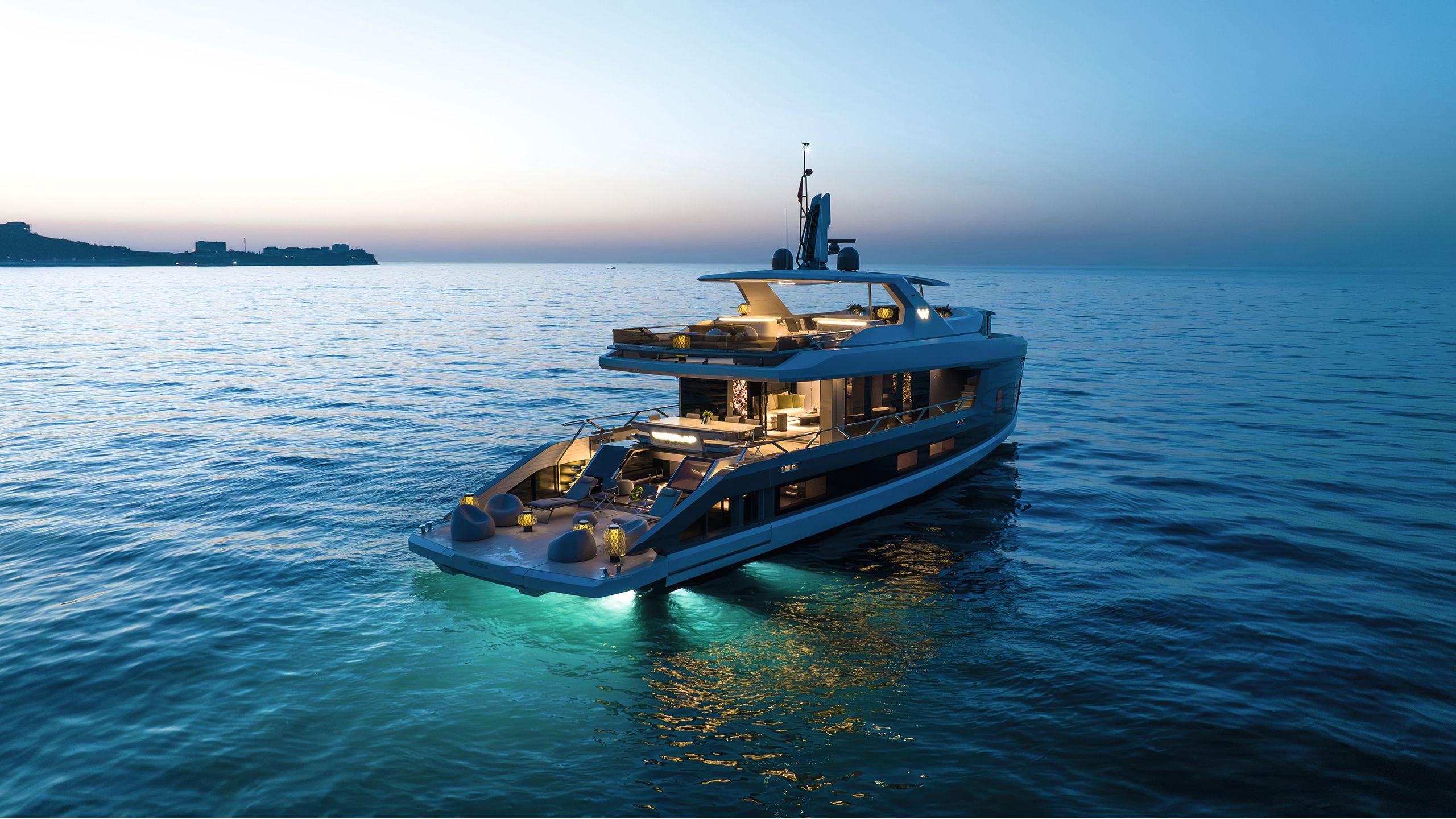
POZITIF STUDIO
POZITIF STUDIO
“The yacht is right on trend, with a massive swim platform/ beach club area that feels like it should be on a 30-metre-plus”
Tastefully backlit, it’s rather stunning to behold and gives the yacht’s split-level concept a definitive sense of continuity. Whatever deck you are on, a faintly glowing golden wall assures you that you are on Water Lily. Walls made of semi-precious stones in different colours for each boat are set to be a staple of the DS line, and I give that a big thumbs-up.
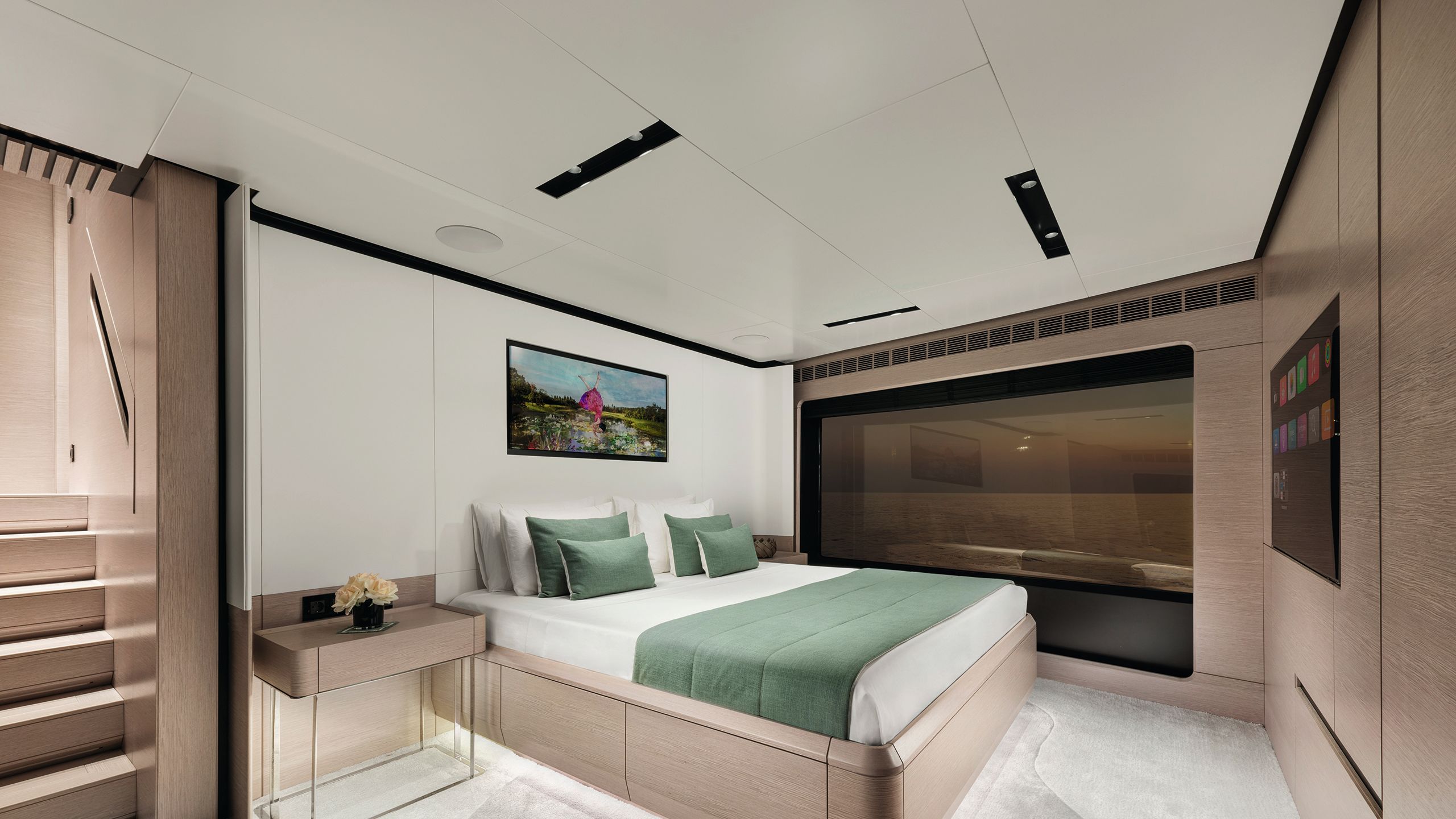
POZITIF STUDIO
POZITIF STUDIO
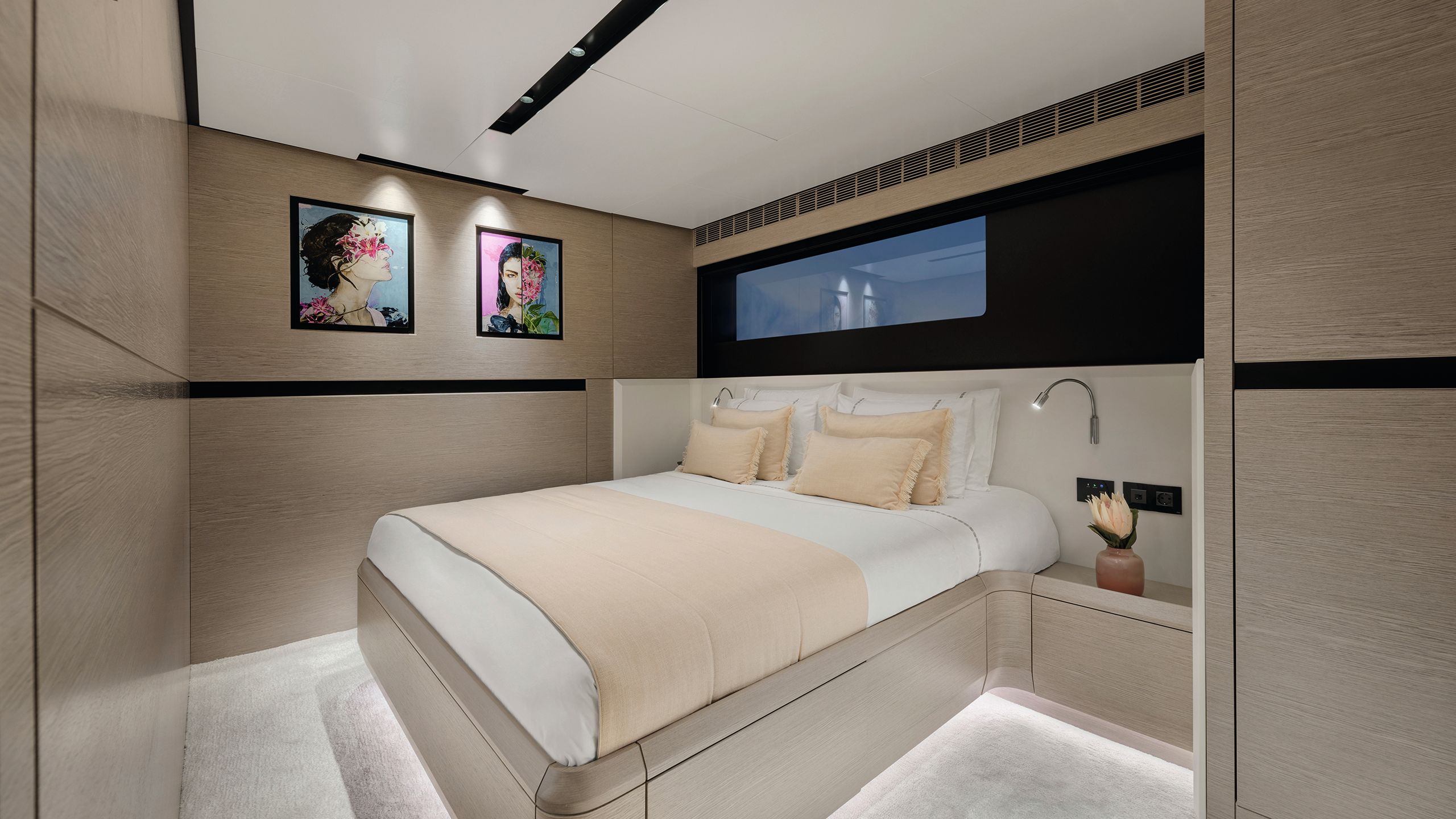
POZITIF STUDIO
POZITIF STUDIO
Even the guest cabins benefit from large hullside windows that illuminate them with appreciable amounts of natural light
The yacht’s sleeping arrangements are rounded out by what equates to a main deck master, which is actually down a few steps from the saloon. The full-beam space is en suite with a walk-in wardrobe and large windows that make good use of the yacht’s high sides.
Those same near sole-to-ceiling windows are in the saloon as well, making for a very well-lit and open space that was expertly decorated by Water Lily herself with glass globes encapsulating hand-blown sculptures of all manner of sea creatures.
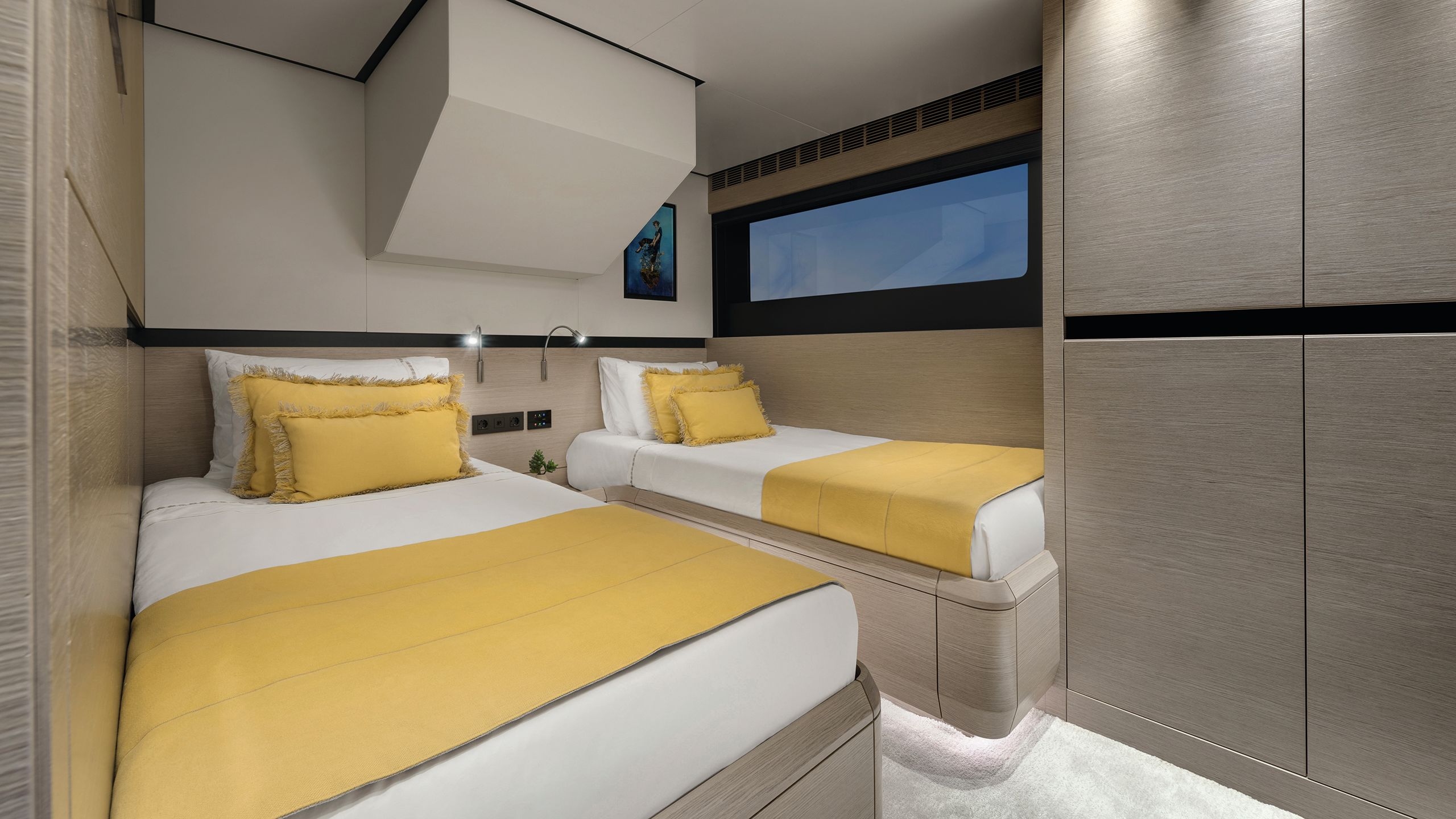
POZITIF STUDIO
POZITIF STUDIO
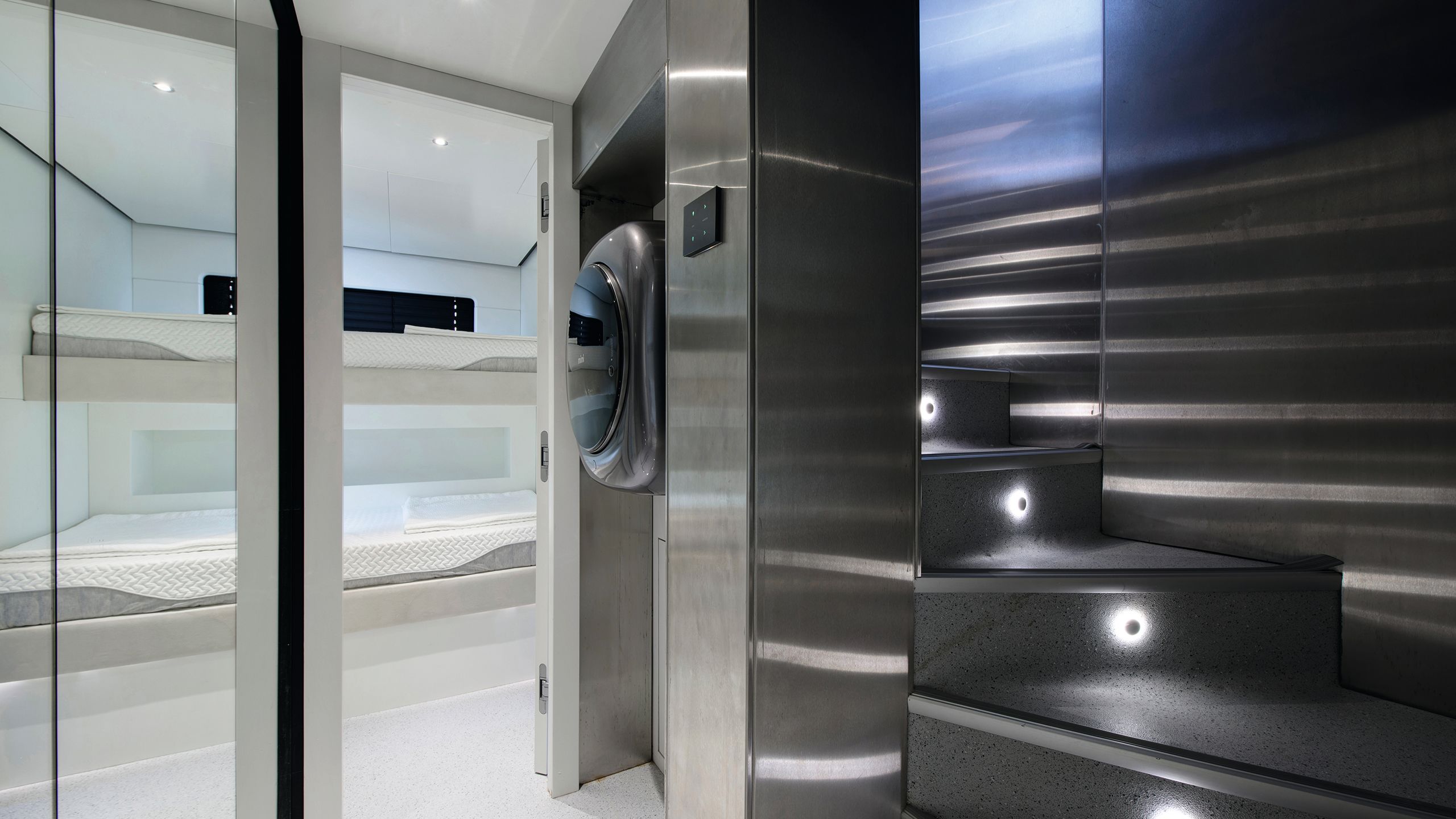
POZITIF STUDIO
POZITIF STUDIO
Comfort is paramount, not just for the owners and guests, but also for the crew. They have large bunks in the space in the bow that impress me enough that I jot down “these actually look comfortable” in my notes, and there are also dedicated crew stairways – unusual for a boat this size. Behind the bridge, the captain has his own berth so he can be close to the wheel.
“The owners can be up top with lots of privacy, but the guests have that same level of privacy down below”
A final space that needs to be noted is the flybridge, which swoops back to cover the entire aft deck, making it exceptionally spacious. An electrically actuated sunshade in the hardtop controls the intensity of the rays at the flick of a switch while modular furniture throughout gives owners room to play.
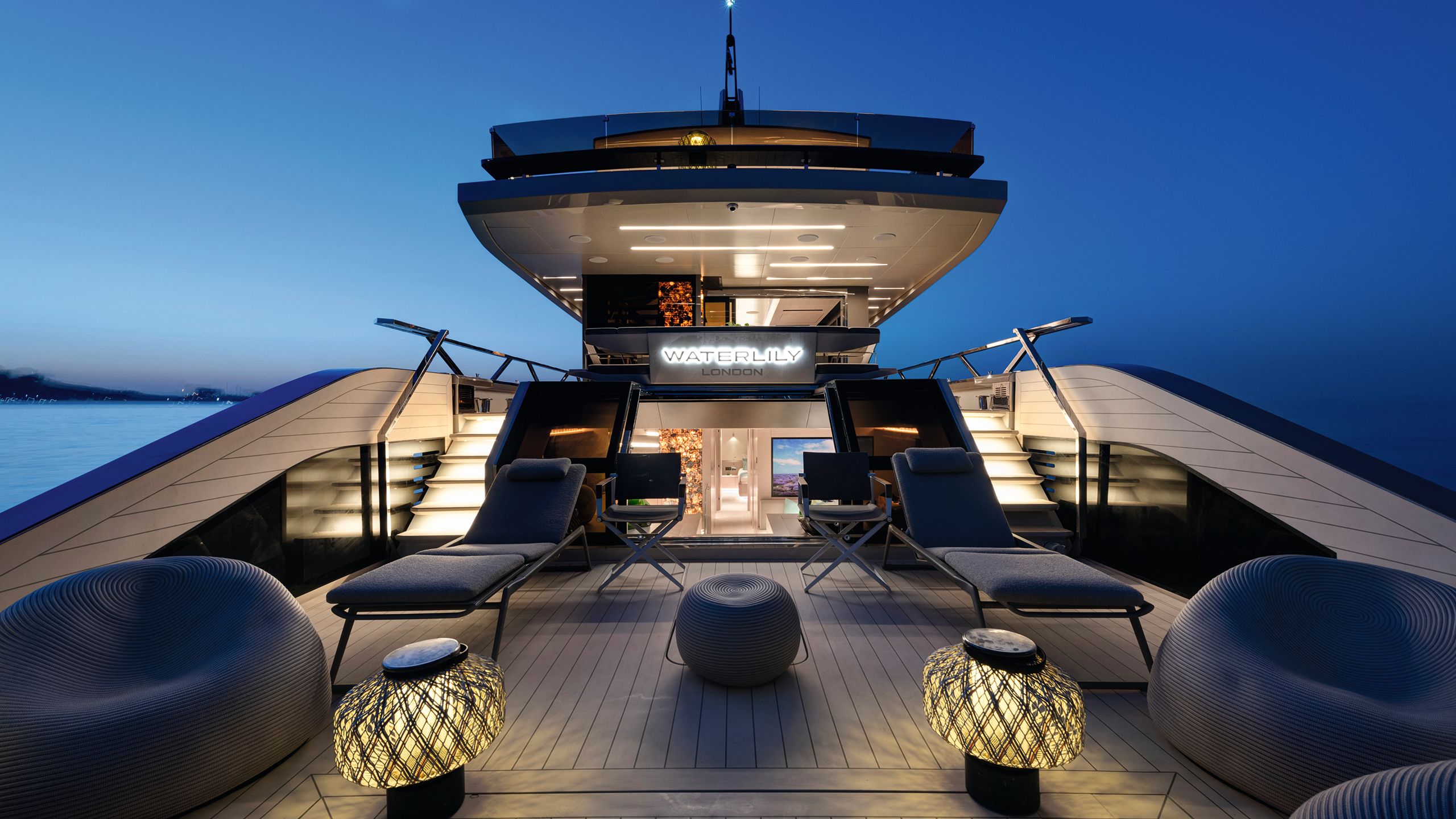
POZITIF STUDIOLoose furniture turns the massive beach platform into a chic seaside lounge
POZITIF STUDIOLoose furniture turns the massive beach platform into a chic seaside lounge
One challenge Red Yacht Design had with a boat with this much volume was to make it pretty to look at. She has the snub-nose bow that has become so en vogue for yachts of this size in recent years, and that can often give a yacht the dreaded cool-box look. To avoid this fate, Sürekli used a simple but effective strategy.
“The two-coloured hull was important to us,” he says, referring to the light-grey middle section of the yacht’s exterior, which is encased at the waterline, bow and the top of the superstructure by white.
“It helped the boat look more sleek and less bulky. It looks very sophisticated. The two colours divide the surface, so you don’t just see one block of colour. Things are broken up nicely and that helps tremendously with the proportions.”
It is an elegant solution to a common problem facing designers – though there is not much that’s common about this boat. Whether steel hulls paired with pod propulsion becomes a thing is anyone’s guess. But with the impressive attention to detail and design I saw on the Mazu 92 DS, I know where I’d put my money.
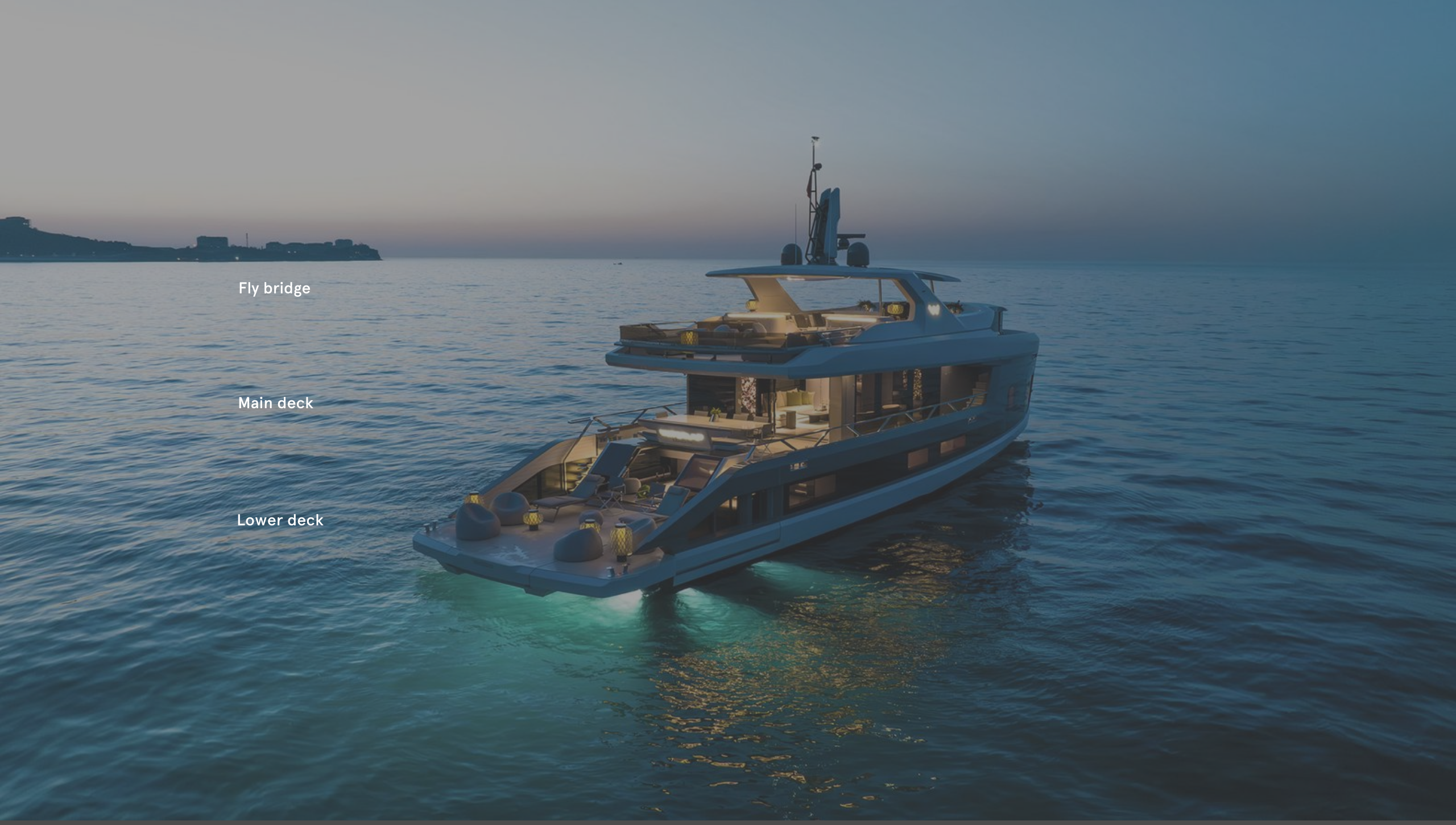
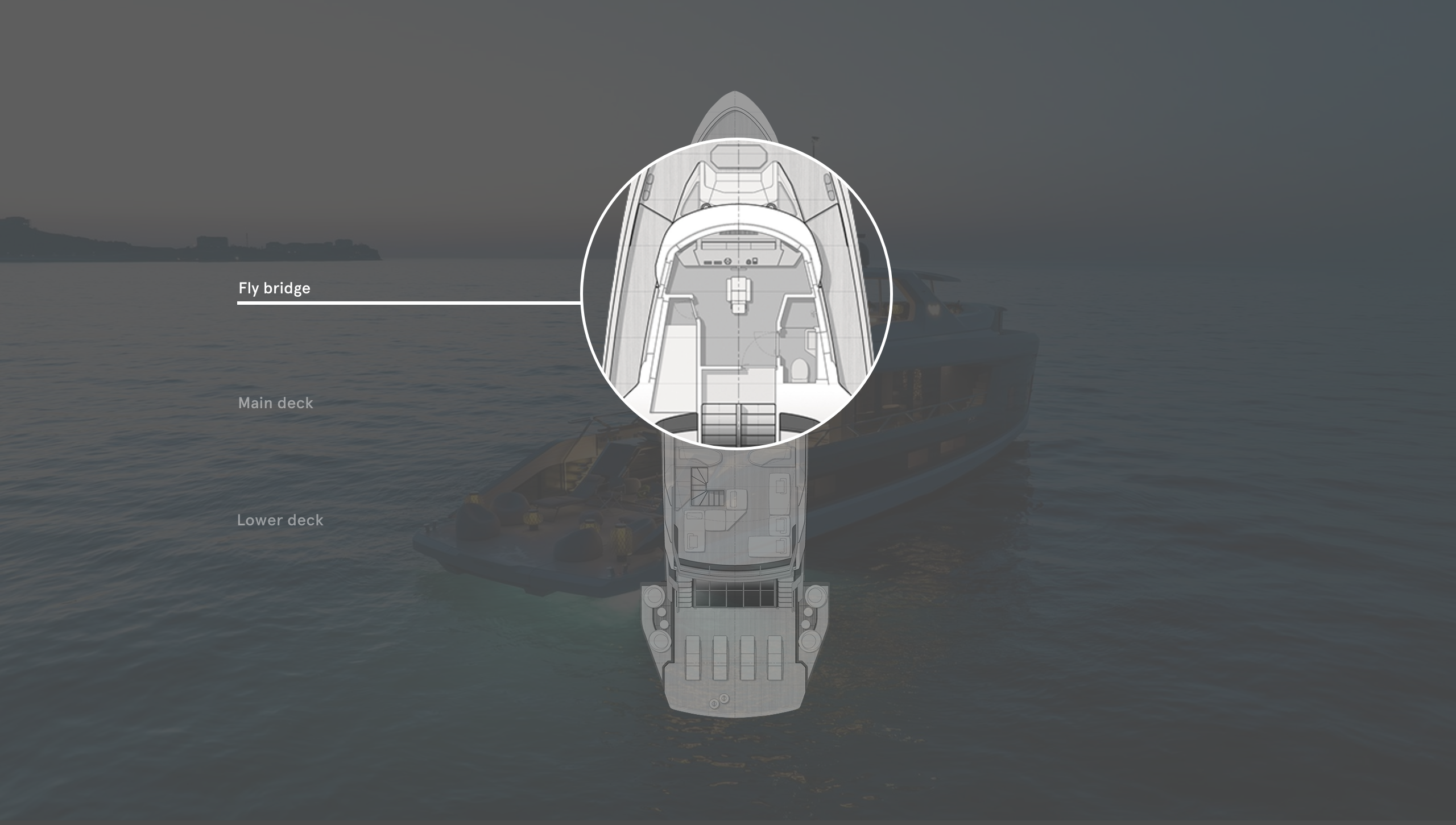
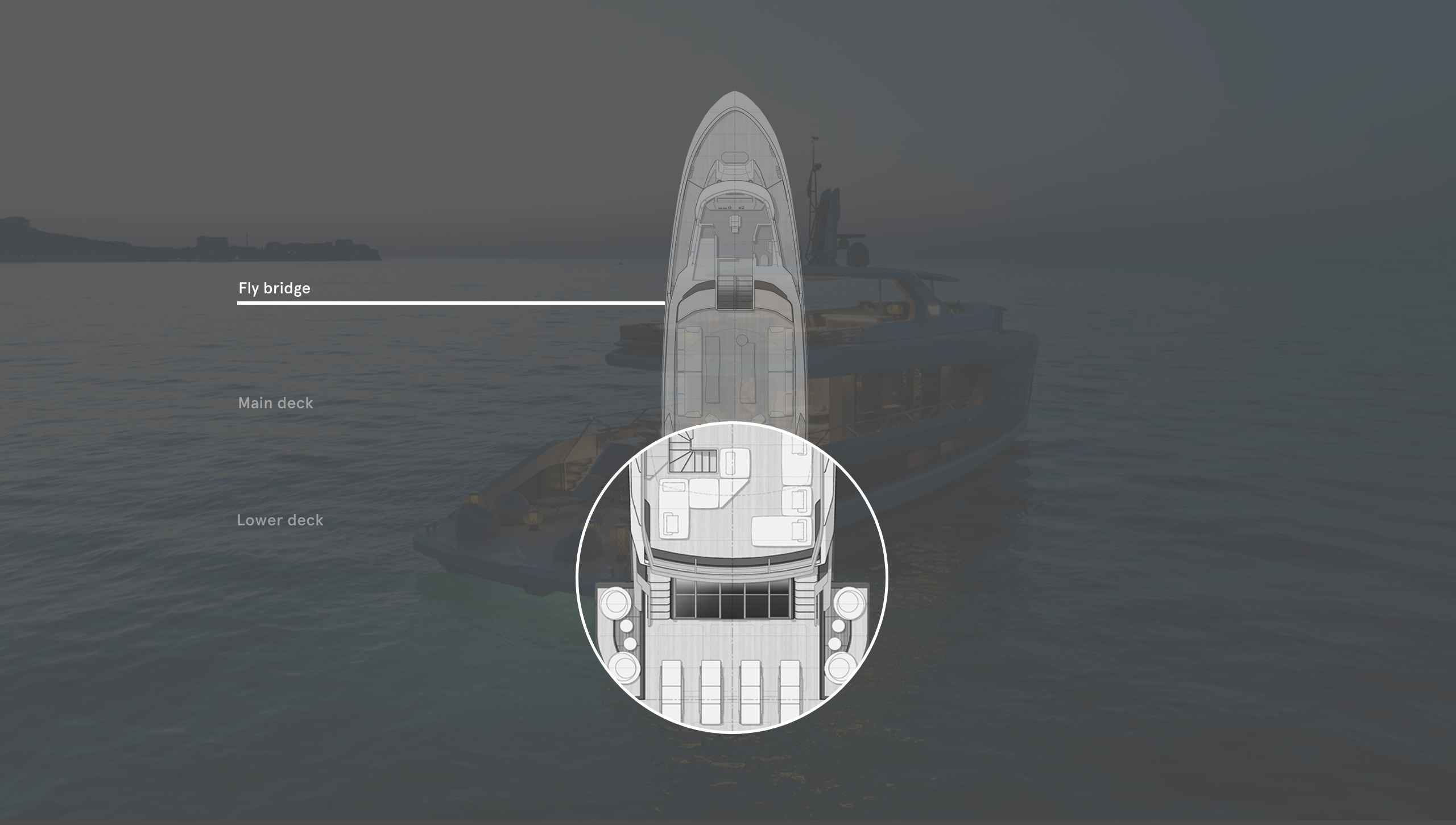

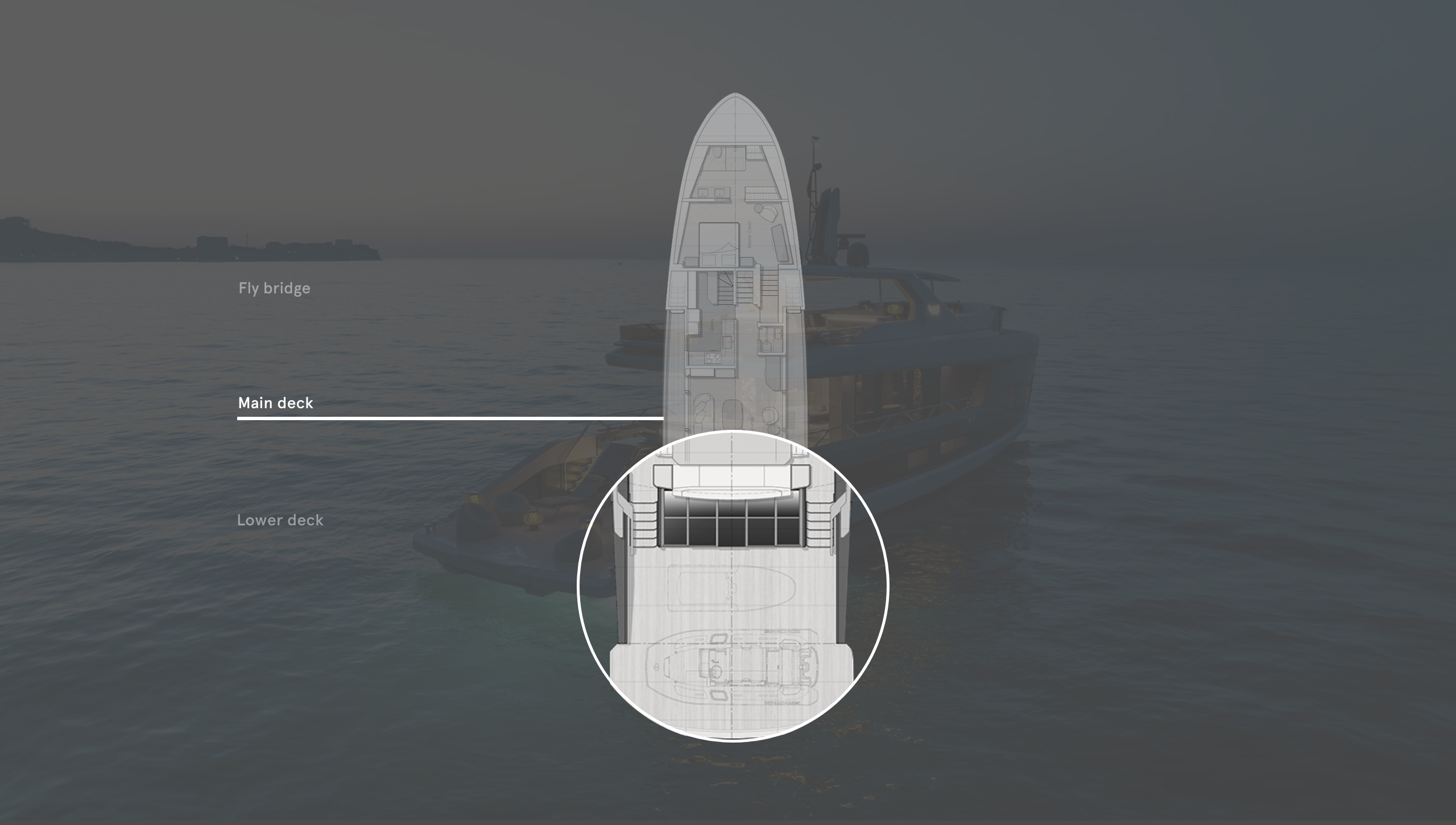
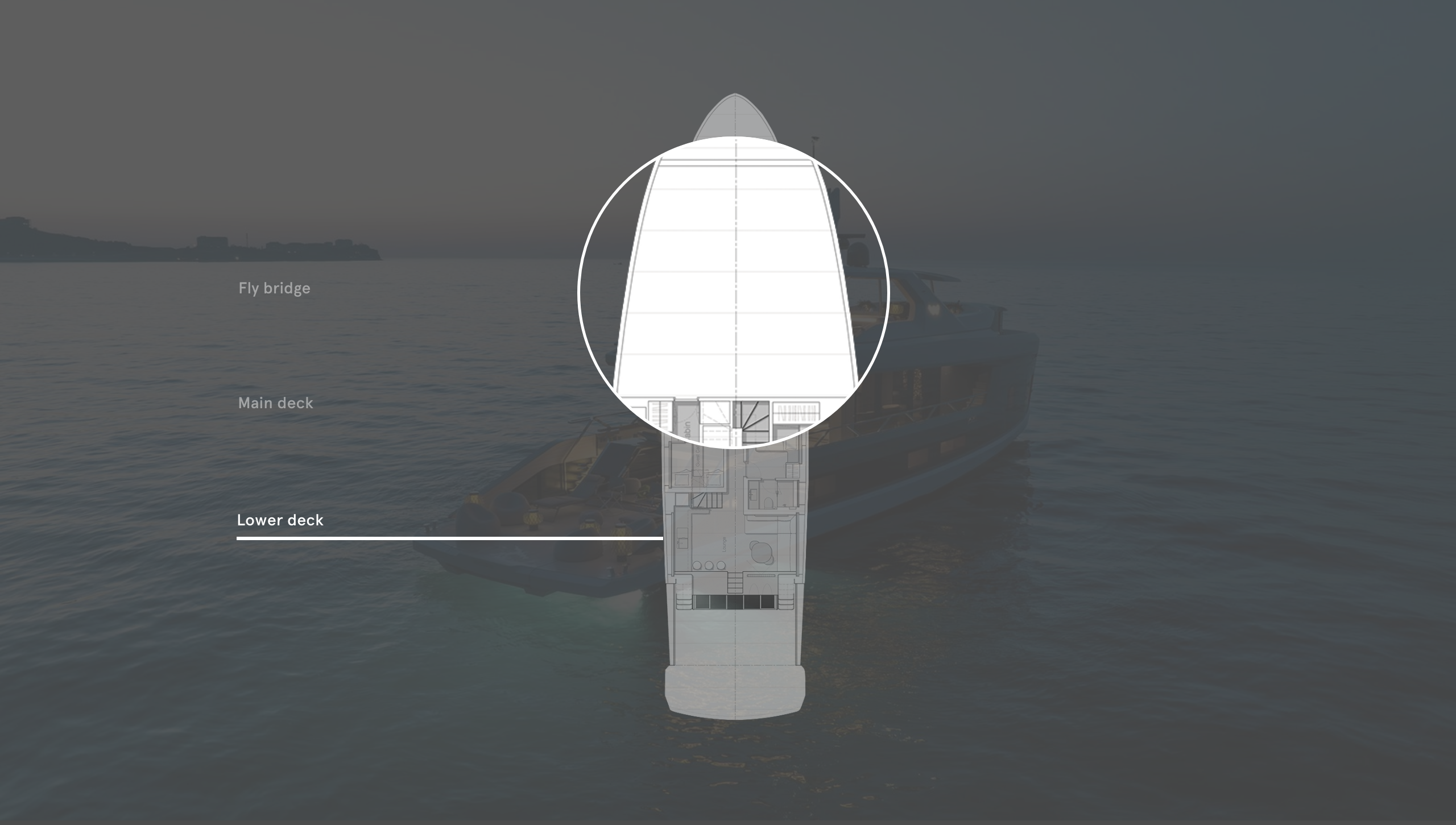
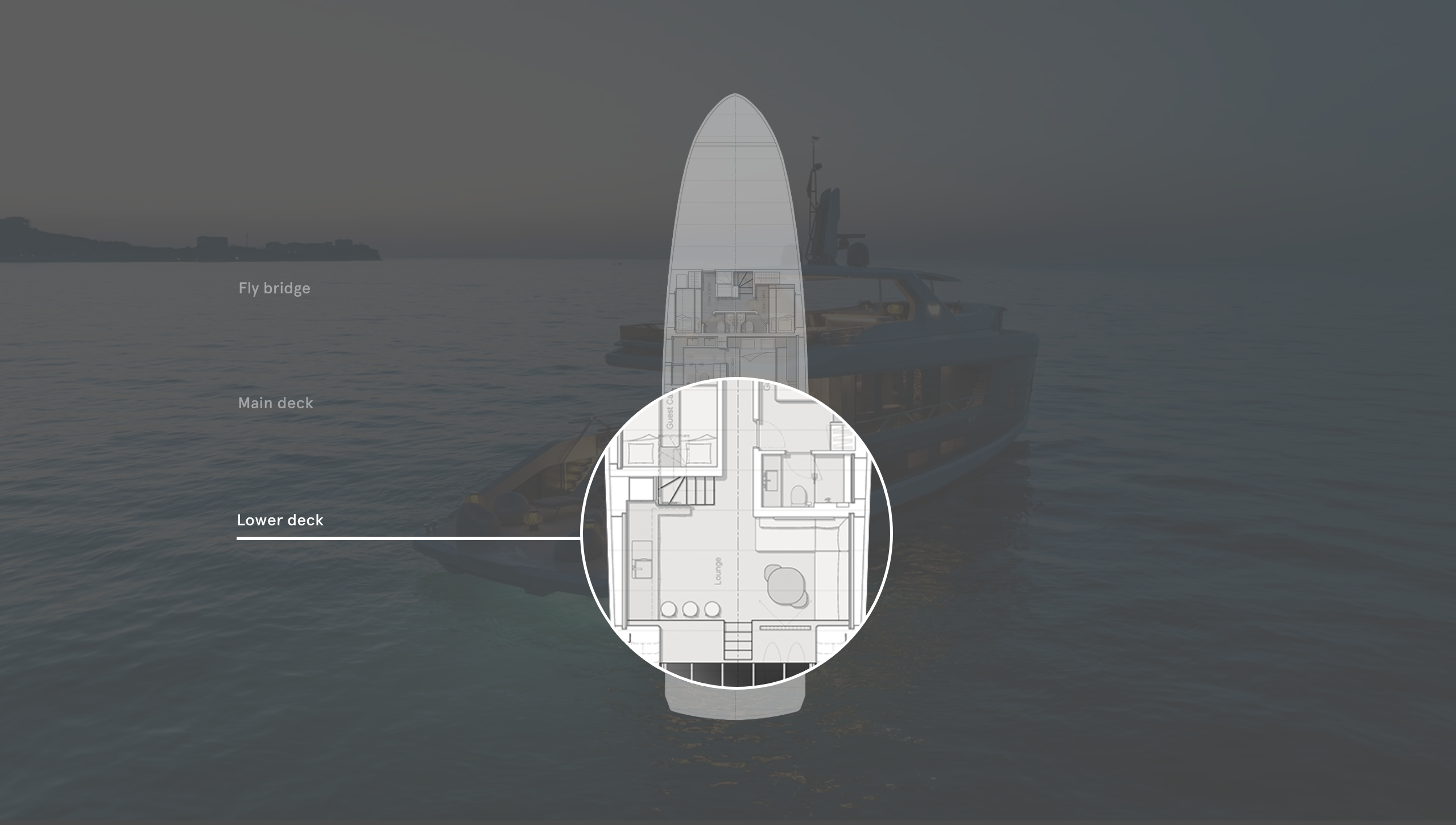
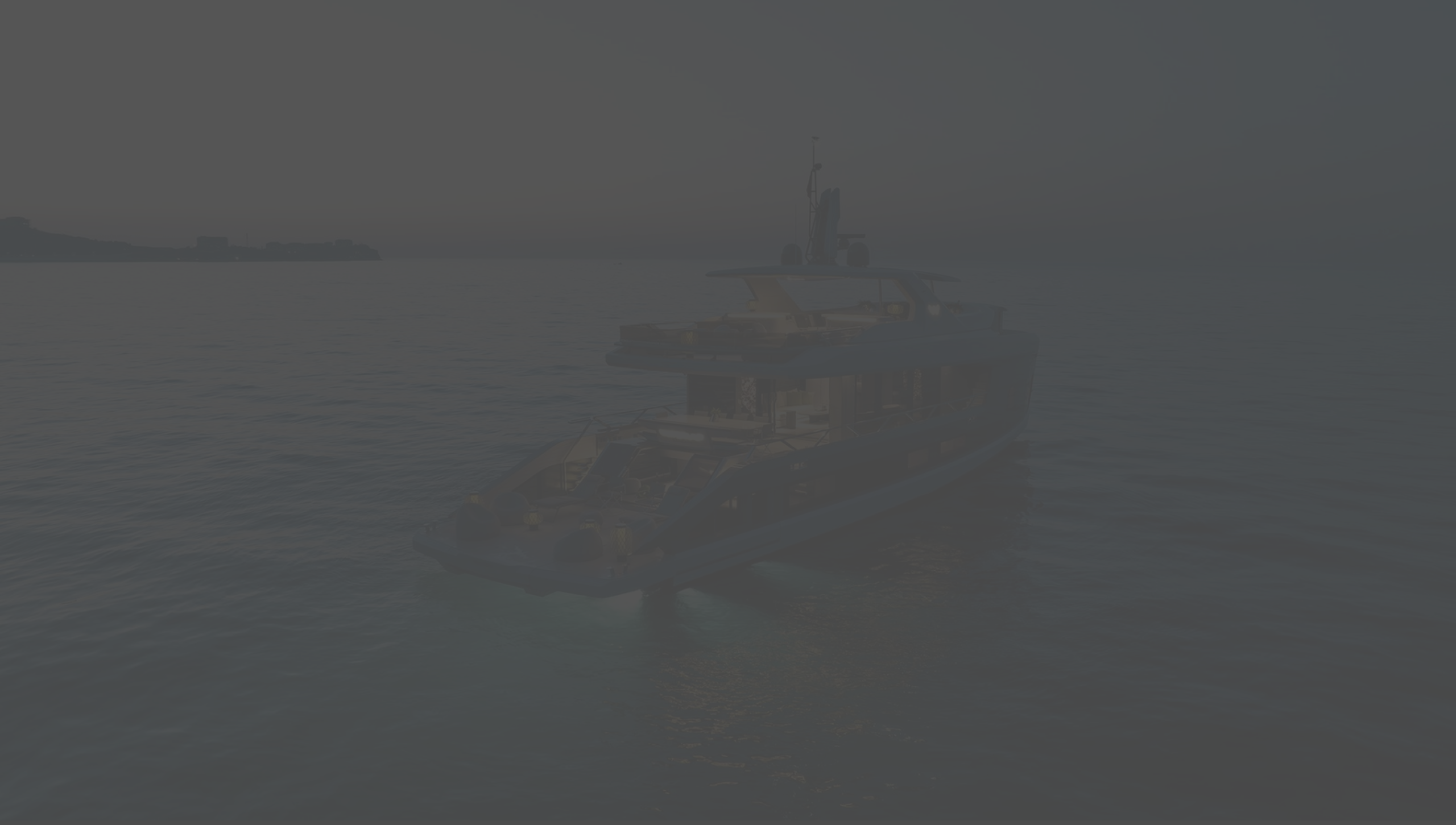
The bow offers a cosy seat to contemplate the horizon
Bulwarks unfold to add even more space for lounging
The owner’s area is a few steps down from the main deck forward
A tender of up to 7m can be stowed on the platform
A second machinery space forward leaves more room aft for guests
A lower-level saloon opens to a vast beach area
LOA 28.45m | Gross tonnage |
LWL 24.8m | Engines |
Beam 6.7m | Generators |
Draught | Speed (max/cruise) |
Range at 12.5 knots | Fuel capacity |
Freshwater capacity | Owners/guests 8 |
Classification Naval architecture | Crew 5
|
Exterior styling and interior design | Builder/year +90 216 468 48 83 mazu@mazuyachts.com mazuyachts.com |
First published in the May 2024 issue of BOAT International. Get this magazine sent straight to your door, or subscribe and never miss an issue.

